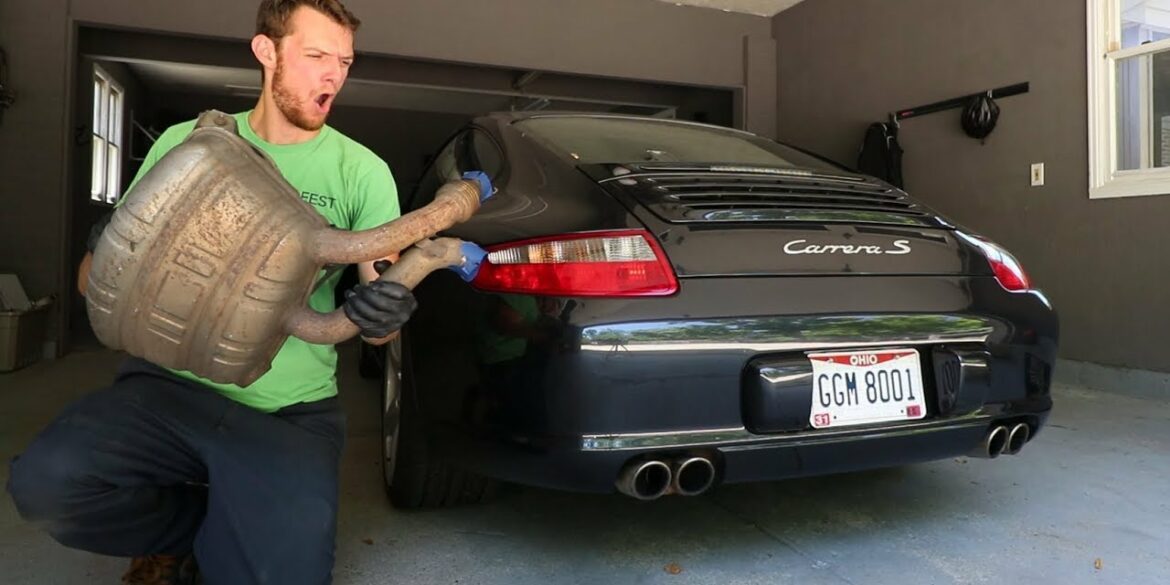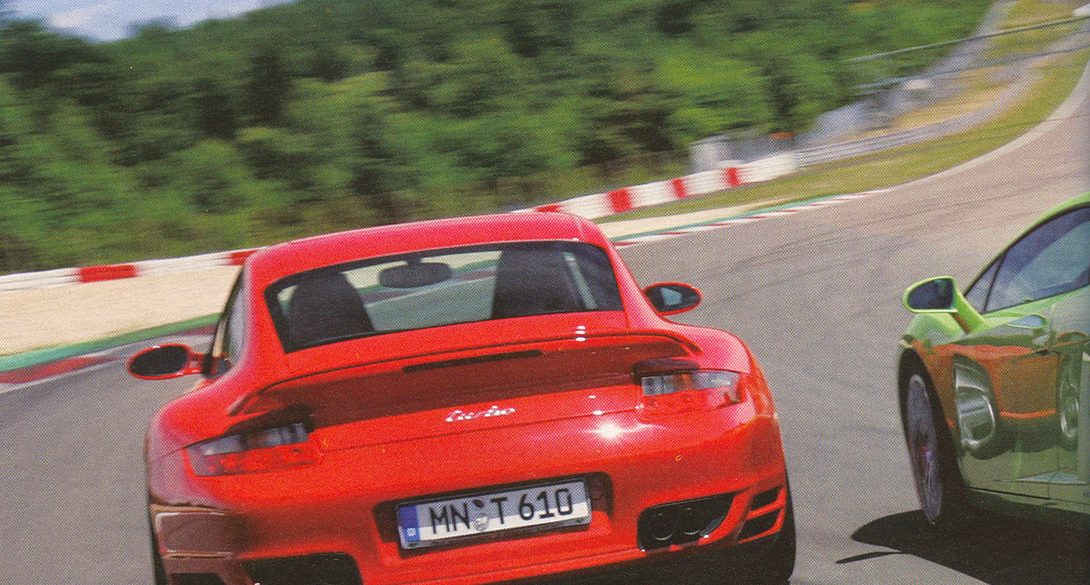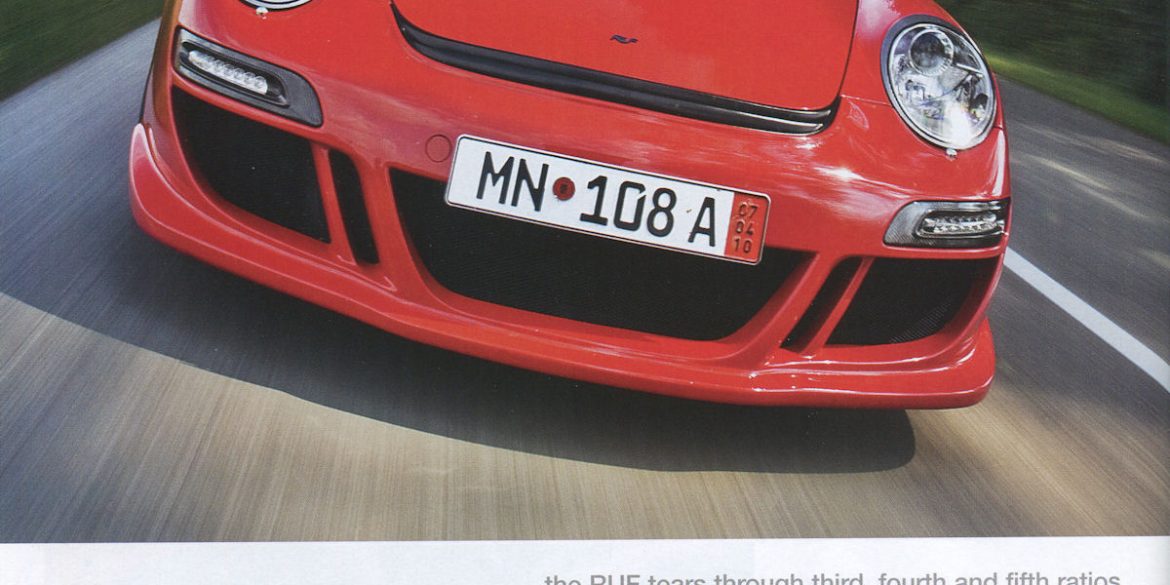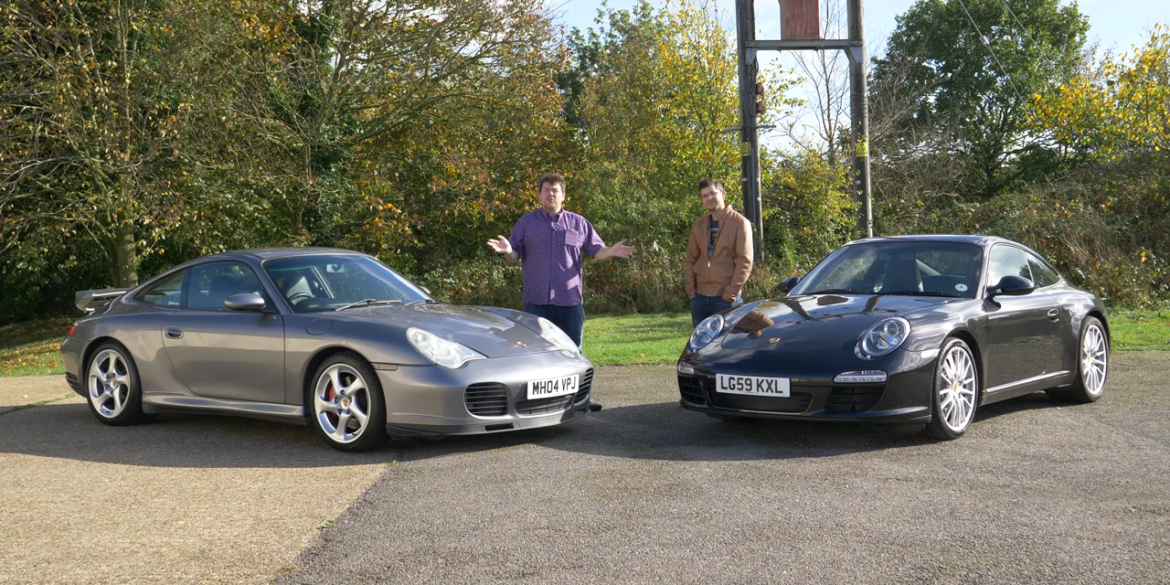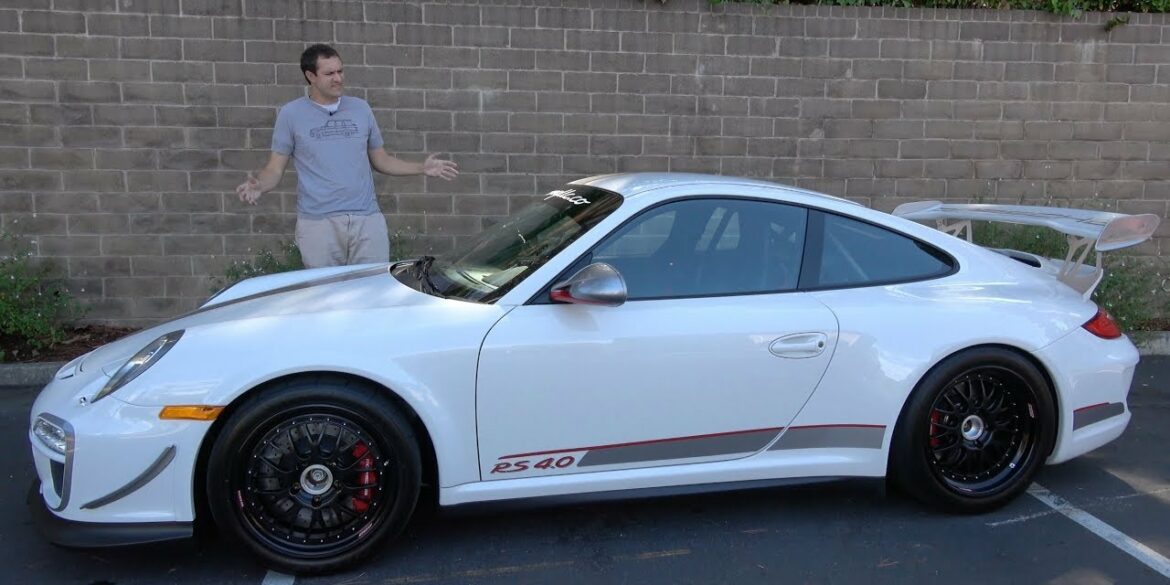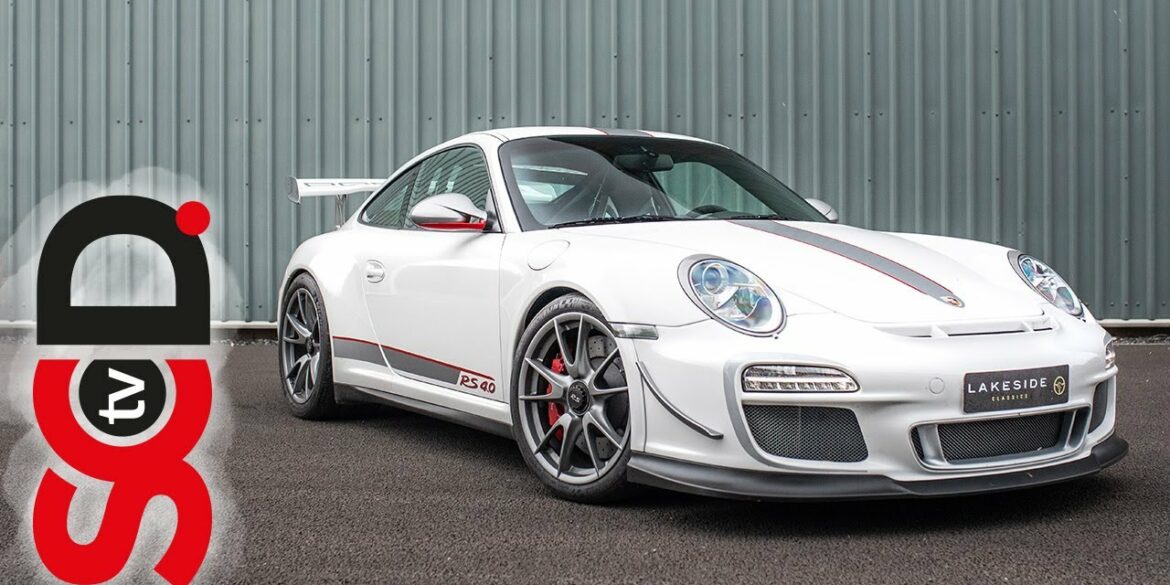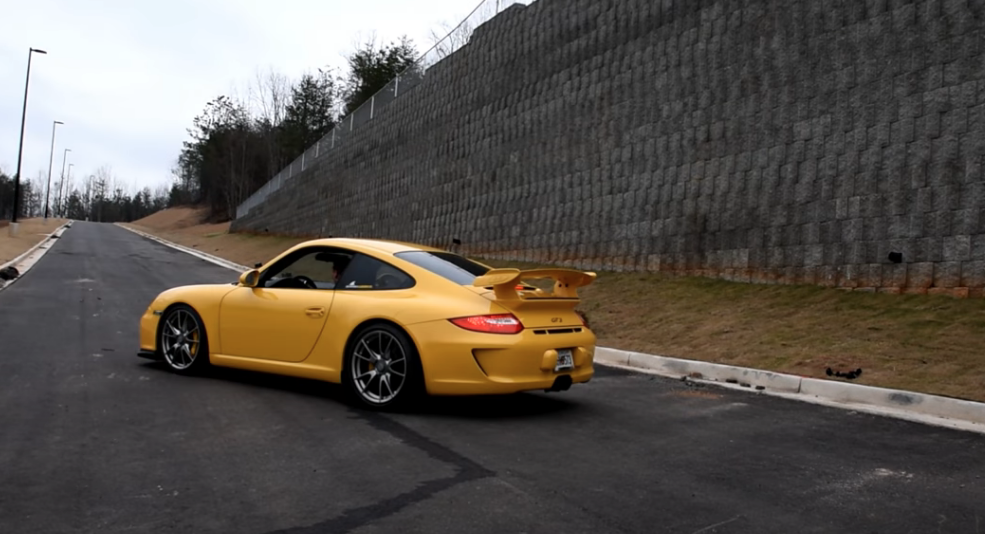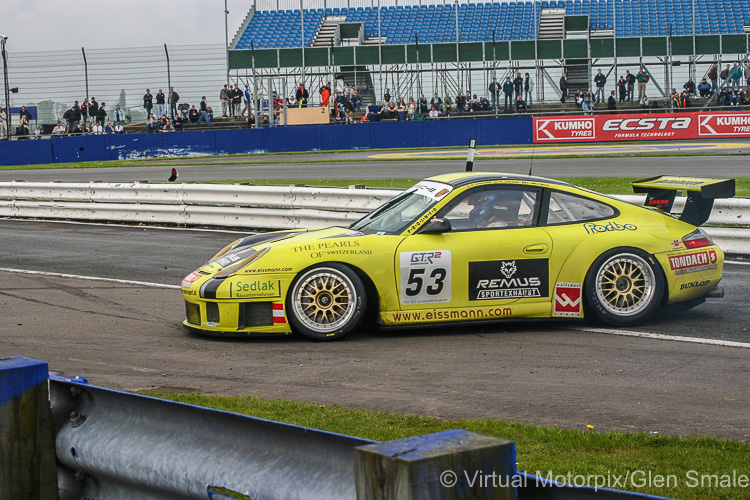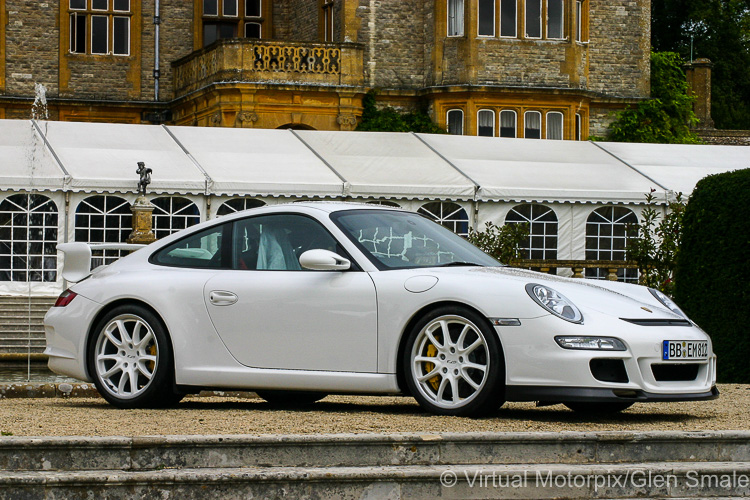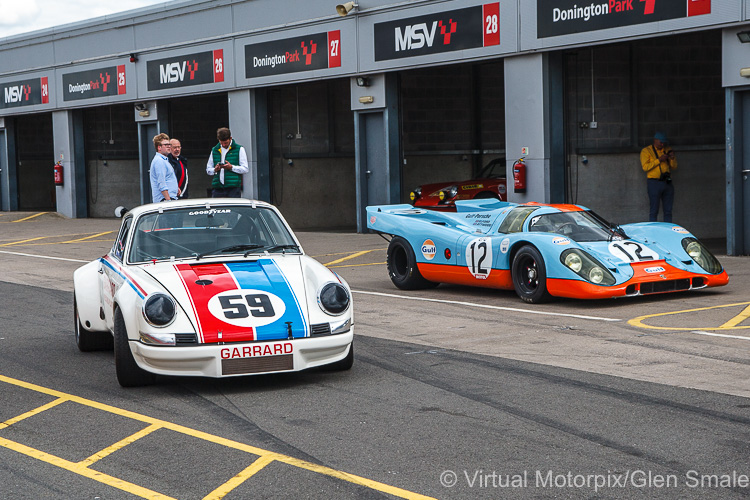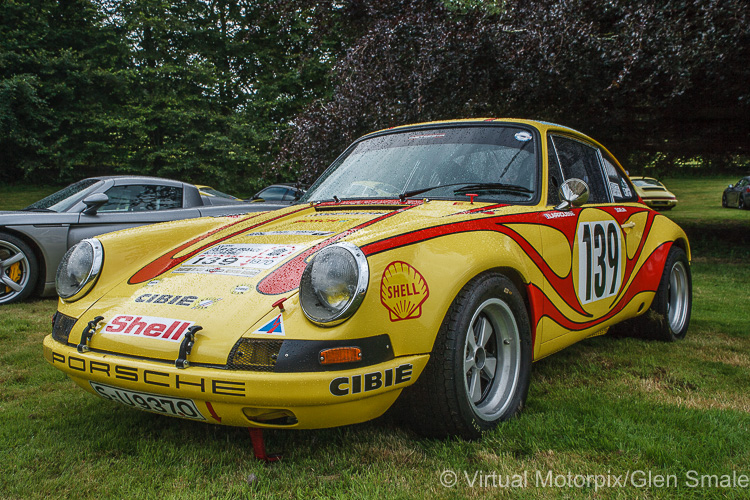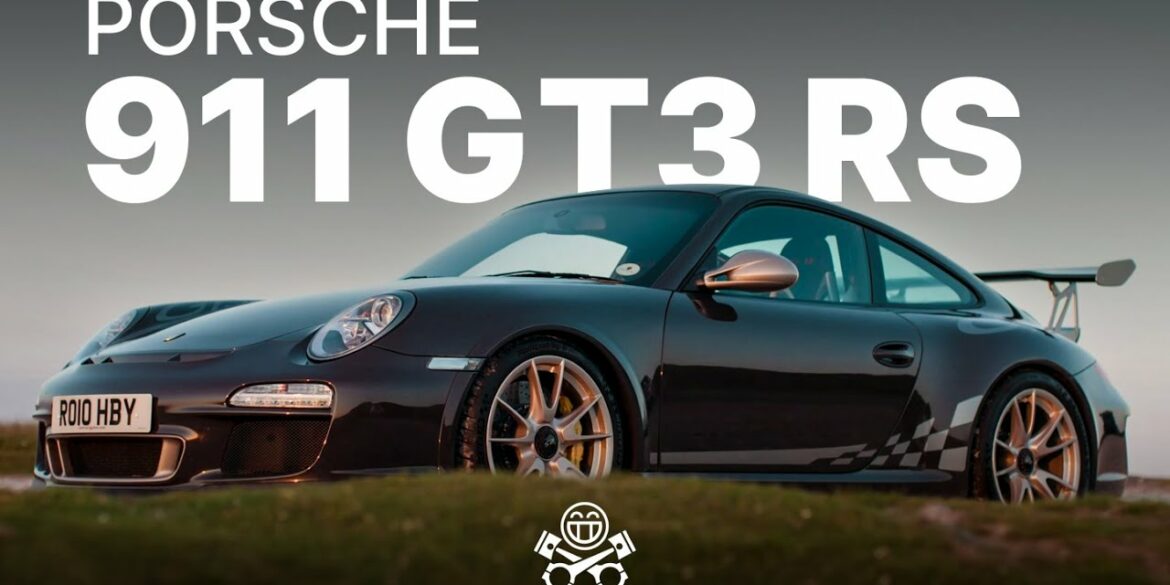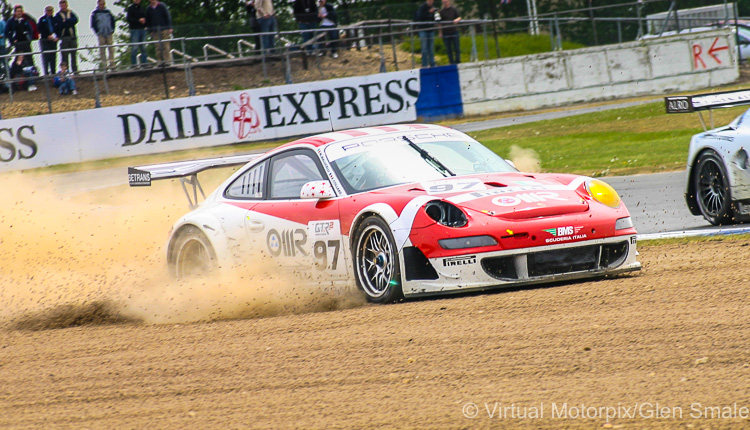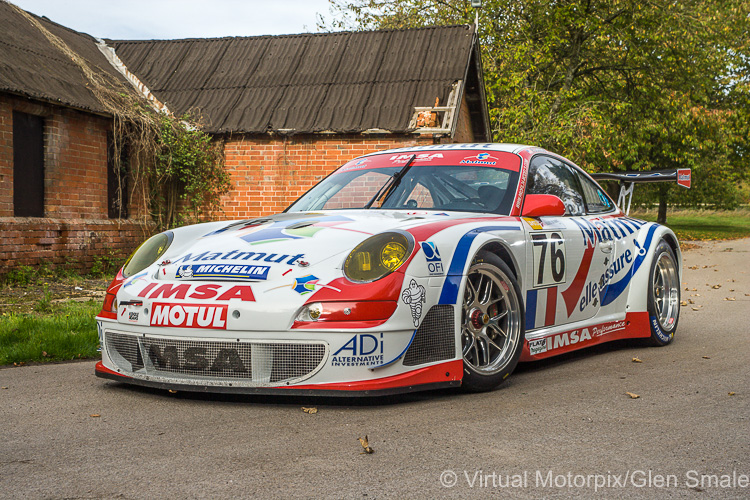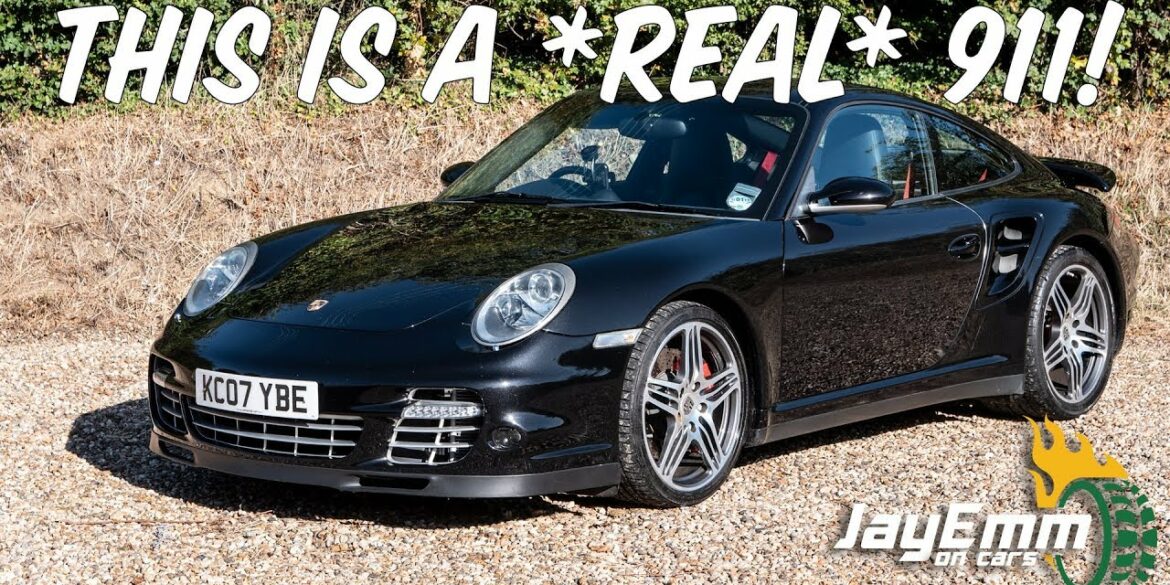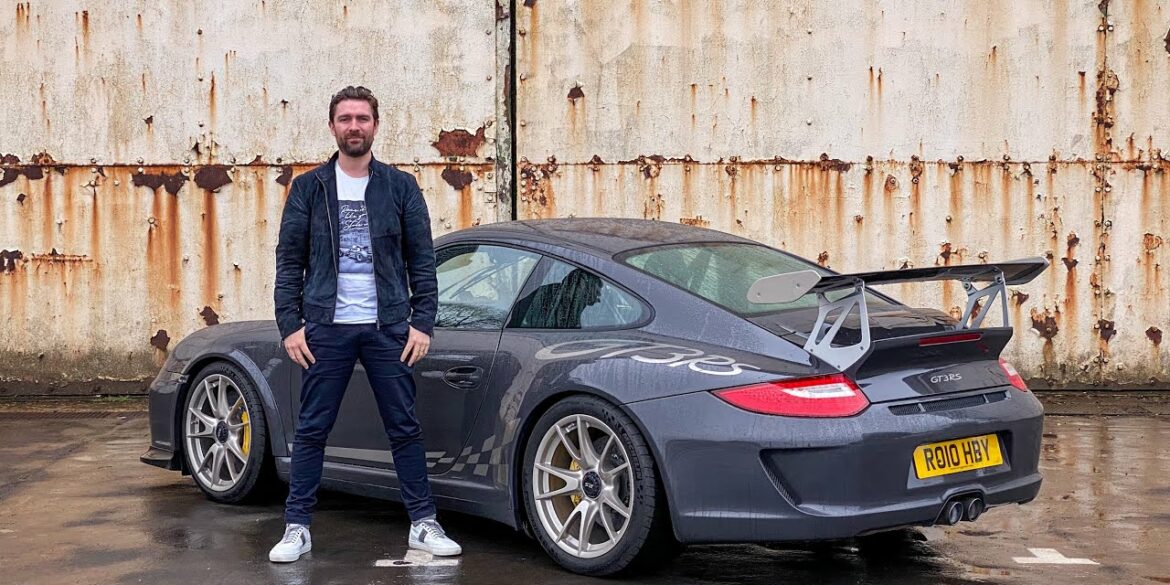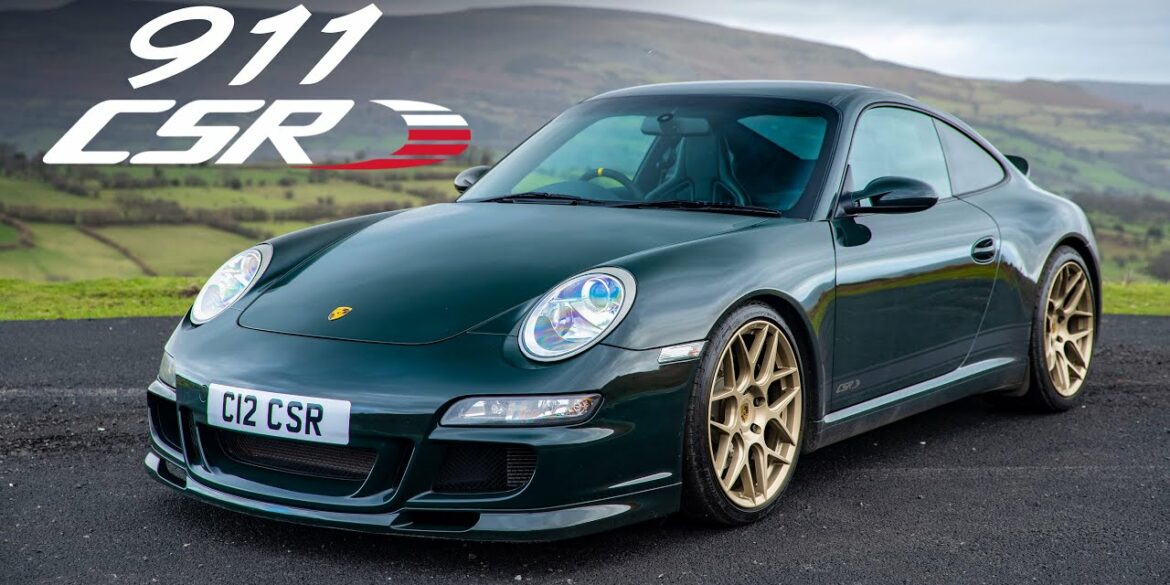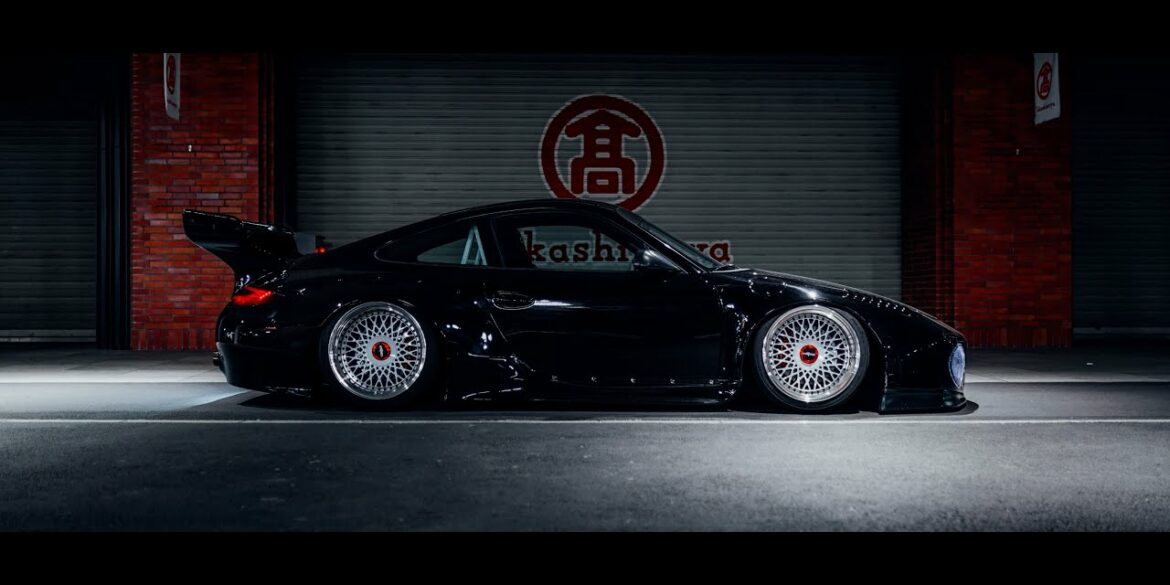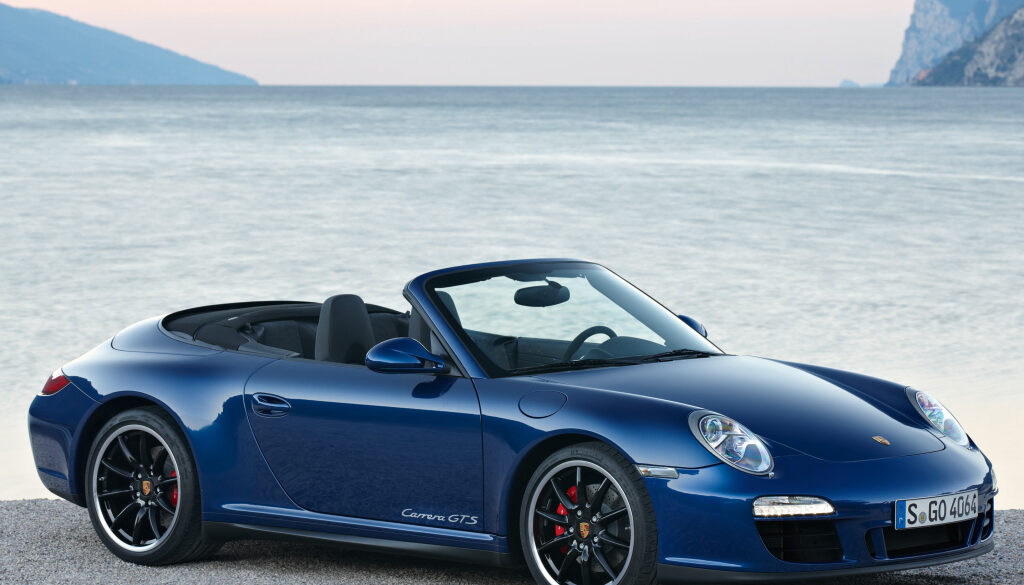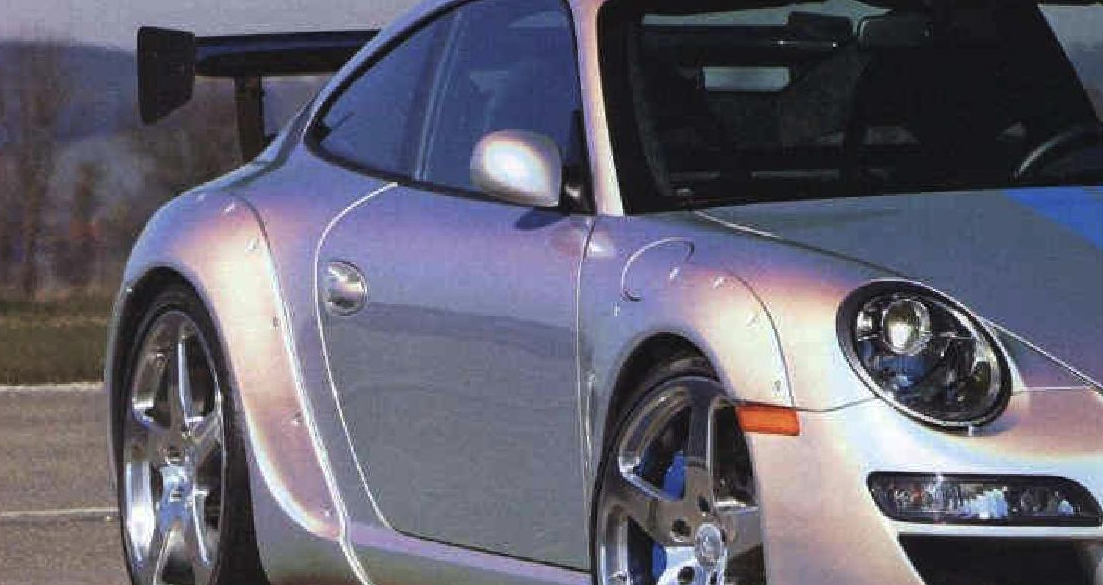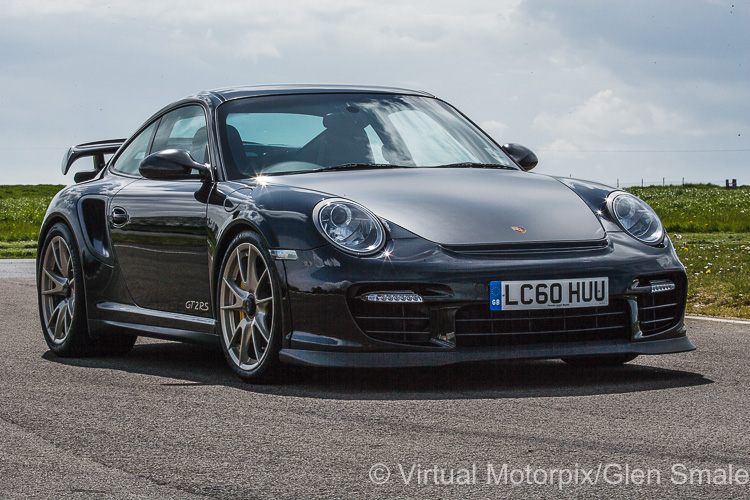Jeremy Clarkson – Ferrari F430 vs Porsche 911 Turbo It may be hard to believe, but Jeremy finally changes his opinion about the benefits of the new Porsche 911 over his favourite brand Ferrari....
The Porsche 997 GT3 Cup was a series of race cars created by Porsche to enter the Fédération Internationale de l’Automobile (FIA) Group GT3 racing class. Replacing the 996 GT3 Cup, the 997 Cup's 3.6 litre engine is rated at 294 kW (400 PS; 394 hp) and was mated to a six-speed sequential transmission. In 2009, the GT3 Cup received several 997.2 updates including a new 3.8 litre engine with an output of 331 kW (450 PS; 444 hp).
Porsche has announced the introduction of the new 2007 911 GT3 RSR (type 997) for the American Le Mans Series and other world GT racing venues. The latest version of the most successful racing sports car in history is based on the street production model 911 GT3 RS (model year 2007) and was launched in late 2006. The 911 GT3 RSR has wider rear fenders and rear track to improve performance capabilities over its predecessor. The car has also been developed to fit into the 1,225 kg class. The new car is built in accordance with the ACO LMGT2 Regulations and the FIA Article 257.
To a large extent, the 3.6-litre boxer engine is identical to the power unit used in the Porsche Mobil1 Supercup and the international Carrera Cup championships. Power output has increased by 20 horsepower to now 440 hp (324 kW) at 8,000 rpm. Maximum torque is up by ten Nm to 430 at 7,250 revs per minute. The power increase results from optimised engine electronics and a modified exhaust system. In contrast to the GT3 Cup, the body of the Cup S is not based on the road-going GT3 but on the GT3 RS.
Following the Porsche 911 GT3 Cup, Porsche AG, Stuttgart, is entering yet another racing car in the 2010 motorsport season: The 911 GT3 R will be raced in series based on the international FIA GT3 regulations, thus succeeding the 911 GT3 Cup S. The main focus in developing this new model was on even better drivability and even easier handling. The 911 GT3 R is powered by a four-litre six-cylinder boxer engine delivering maximum output of 480 bhp (353 kW) transmitted to the rear axle by a sequential six-speed dog gearbox.
Auto Express Reviews The 997 Porsche 911 GT2 RS The 911 GT2 RS is the fastest and most powerful production car the company has ever made, and only 500 examples will be built. It’s the ultimate expression of the 911’s sporting ability, and the carbon fibre bonnet and polycarbonate windows...
The 997 GT2 RS Is the Fastest Stick-Shift Production Porsche Ever Chris Harris drives the all new 911 GT2....
Top Gear Drag Race – Audi R8 vs Porsche 997 Jeremy heads out on to the test track and pits the new Audi R8 V10 Spyder against the latest version of Porsche’s enduring 911 Turbo cabriolet. But what will the Stig make of them?...
Autocar Compares the BMW M3 GTS to the 997 Porsche 911 GT3 Can the hardcore BMW M3 match the legendary Porsche 911 GT3’s poise? See the two track-biased sports cars go head to head....
During the Geneva Motor Show, a Porsche 911 GT3 R with innovative hybrid drive is making its debut. The innovative hybrid technology featured in the car has been developed especially for racing, standing out significantly in its configuration and components from conventional hybrid systems. In this case, electrical front axle drive with two electric motors developing 60 kW each supplements the 480-bhp four-litre flat-six at the rear of the 911 GT3 R Hybrid. Instead of batteries, an electrical flywheel power generator delivers energy to the electric motors.
The Porsche 997 GT3 R Hybrid 2.0 is an update to the 997 GT3 R Hybrid. Compared to its predecessor, which debuted in 2010, the 2011 second-generation hybrid is 20 percent lighter and more efficient without any concession to lap times. While sharing the same paint scheme, the new vehicle is easily identified by its lack of intakes in front of each rear wheel - changes to engine cooling allowed the slats to be dropped and aerodynamic efficiency improved. It gets a traditional race-bred flat six engine. The GT3 R Hybrid has a completely independent second driveline in the front of the chassis, a clever and complex hybrid electric set up that rockets it from standstill to 60 mph in just 2.5 seconds.
2011 Porsche Carrera GTS Review The 2011 Porsche Carrera GTS is the last of the type 997 Porsches before the new type 991 car hits the streets. It has about every go fast goodie that you can currently out on the 911 including 23 more horsepower and the turbo’s wide...
GT3 RS 4.0 RS Ride & Review Chris Harris reviews the evo cars of the year...
Last Drive Before Hibernation English winters and Michelin Pilot Sport Cup tires don’t mix, so I’m taking one last drive before putting the car that is rapidly bankrupting me into storage – special storage....
Tuned Porsche 997 Turbo S Review TUNED visits BBi Autosport in Huntington Beach, CA to drive their new Porsche 997 Turbo S. This unbelievable machine balances big power with low weight and suspension and brake upgrades to match. TUNED runs a quarter mile on a runway before heading into the...
Porsche 911 (997) Technical Specs & Performance Porsche 911 (997) Production Car Specs Looking at the tables above, the conclusion based on the most important performance figure – the power-to-weight ratio – says the least agile are open top cars with automatic gearbox and 4WD and the most agile are...
Porsche 911 GT2 RS Top Gear Review The team takes the Porsche 911 GT2 RS around the closed streets of LA, resulting in a drag race. ...
Porsche 911 Carrera 4 GTS (997): A Greatest Hits Collection? The GTS variants of the 997 Porsche 911 were regarded as the best of the breed. Is it too good though?...
Porsche 997 911 GT3 Review The 997 GT3 was a tour de force of driving brilliance, treading the balance between comfort and hardcore thrills rather finely. It’s also the last GT3 that’ll ever have a manual gearbox, and that’s a great shame....
The 997 Carrera S Top Gear Review Jeremy takes the Porsche 911 Carrera S out for a spin to see if there really is any difference between it and the previous model. Clip taken from Top Gear Series 5 Episode 1....
Thrashing Porsche’s Most Epic Car It’s #ThrowbackThursday! Jason is trying out the Porsche 911 GT2 RS to see if it competes with the Ferrari 458 Italia....
Jay Leno’s Garage Review of a tuned Porsche 997 GT2 When Magnus met Alex Ross of SharkWerks at Jay’s garage, a love connection was made – which yielded this baby!...
Coffee, Magnus, and a 700HP Porsche GT2 Matt Farah tests the SharkWerks Porsche GT2, a 700HP beast of a car....
The base Carrera has essentially the same 3.6 L flat-6 engine that its predecessor, the Type 996 Carrera used, now good for 321 bhp @ 6800 rpm and with torque of 273 ft lbs @ 4250 rpm. The sprint from 0 to 60 mph is over in just 4.80 seconds and top speed is 177 mph. The quarter mile is over in a respectable 13.1 seconds. The 911 Carrera is now faster, more stable, more precise and forgiving, an altogether superior-make that more efficient-sports car than the 996.
Just a few months after the introduction of the 2004 911 (997 series), the convertible version was released. The release of the 997 911 Carrera Cabriolet marked the first time since 1977 that Porsche has given the convertible 911s the same engines as their Coupe siblings. The base 997 Carrera Cabriolet gets the 3.6-liter flat six-cylinder engine with 321 bhp and 273 ft lbs of torque. The convertible version for both Carrera and Carrera S was developed at the same time with the coupe.
The 997 Carrera S was the first step up in performance over the base 997 Carrera. Available over two distinct generations, the 997.1 Carrera S used a 3.8-liter engine producing 355hp – the available X51 Powerkit bumped that number to 376hp. From 2009 onwards, the 997.2 Carrera S offered 380hp from 3.8 liters. Besides a more powerful engine, it also comes standard with 19 inch wheels, larger brakes, and a lowered suspension with PASM.
The Carrera S convertible was introduced to the market at the same time with the Carrera Cabriolet, a few months after their coupe-versions were unveiled. The convertible version for the Carrera S got reinforcements needed for the cabriolet built while the engineering was going on for the coupe, ensuring that the drop-top version was just as strong and performance-focused. It got the same engine as the Carrera S and made a case for itself as the best 911 of the range at the time.
The 997 Carrera 4 was the all-wheel-drive version of the standard 997 Carrera and it arrived as a 2006 model year car (along with the 4S models). The 997.1 Carrera 4 had a3.6 L Watercooled Flat 6 (M96/05) engine that was good for 321 bhp @ 6800 rpm and 273 ft lbs @ 4250 rpm. It had a sub 5 second 0 - 60 mph hour time and a top speed of 174 mph. The transmission (six-speed manual or five-speed Tiptronic) feeds a forward propshaft that mates to a viscous coupling unit with a front differential.
The Carrera 4 Cabriolet was released with the rest of the 4 and 4S models as 2006 model year cars. With a sure-footed, four-wheel drive powertrain as well as that "wide-body" stance, and with tops that open or close at the touch of a button, the Carrera 4 Cabriolet really started to make the case it could do it all. The wide look gave the 4 a widened track, larger wheels and tires and four-wheel-drive powertrain that gives more dynamic stability, especially in inclement weather conditions. Developed at the same time as the coupe.
Along with its sibling Carrera 4, the 2005 Carrera 4S offered an all-wheel-drive system for the Porsche 911, but unlike the 4, the 4S gets the Carrera S' more powerful engine and it turns out that makes a big difference. The Carrera 4S was the more powerful and more dynamic version of the 997 Carrera 4 and an overall great sports car, especially for those in colder climates who need the safety of all-wheel traction. All rounder that fits nicely in the 911 lineup as perhaps the most practical.
While the 997 Carrera 4S coupe sold a healthy 15,056 units between 2006 and 2008, the equally exciting Carrera 4S Cabriolet sold 12,587 units, making it a pretty popular 997 model. The reason is pretty simple. It had a gorgeous wide-body stance, all-wheel drive traction and that potent 3.8 L Flat 6 that was good for 350 bhp and 295 ft lbs of torque. The first convertible 911 that was as good a performer as it coupe siblings with the added benefit of open top driving in the summer with the comfort of being a great daily driver all year round.
The sixth generation of the 911 series’ top-of-the-range model was unveiled at the 2006 Geneva Motor Show. The 997 911 Turbo has 473 bhp @ 6000 rpm, 60 bhp more than its predecessor. Rated torque is now 473 bhp @ 6000 rpm. The speed range in which this power is available has also been extended. While the previous model’s maximum torque was available between 2,700 and 4,600 revolutions per minute, the corresponding figures are now 1,950 to 5,000 revs. 0 to 60 mph is over in a blistering 3.6 seconds and top speed is 193 mph. The ultimate GT.
The 997 Targa design is the same as the 996s, with the power-operated panoramic sunroof and lifting rear window glass. The 997 Targa version's entire operation benefitted from thinner glass that cut approximately 4.2 pounds from its weight relative to the prior 996-series Targa. The 997 Targa 4 has softer spring rates than the coupe, a more generous helping of leather in the cabin, a better tally of standard equipment. The Targa 4 might therefore be all the 911 you ever want; not the fastest or the most visceral, but certainly the most complete car in a very impressive bunch. A great all-rounder.
The two 997 Targa 4 cars are both offered in only all-wheel-drive. Available with either a 3.6 litre flat 6 in the Targa 4, or with a more powerful 3.8 litre flat 6 in the Targa 4S, the new car offers almost all the fun of a convertible without sacrificing the dynamic abilities of a hardtop. The Targa 4S gets to 60 mph in 4.7 seconds and tops out at 179 mph thanks to its 3.8 liter flat six pumping out 350 bhp and 295 ft lbs of torque. It has softer spring rates than the coupe, a more generous helping of leather in the cabin, a better tally of standard equipment, more storage space behind the front seats.
Like the 911 Turbo Coupe, the 997 Turbo Cabriolet is powered by a 3.6 liter six-cylinder boxer engine with biturbo turbocharging and Variable Turbine Geometry (VTG). The powerplant already generates 480 hp (473 bhp) and 460 ft lbs of torque at 1950 rpm. The manual transmission version can accelerate from 0 to 100 km/h in just four seconds while the Tiptronic S the time can be cut to 3.6 seconds. Top speed for the Cab is the same 193 mph as Coupe and only weighs 70 kilos.
Porsche refers to it as a new generation, even though the internal chassis code 997 remains unchanged. The 997.2 therefore is more of a mid-term facelift with some significant technological changes. Notably, the water-cooled flat-six engines get direct-injection technology, and a seven-speed, dual-clutch transmission replaces the previous five-speed Tiptronic automatic while the shift-it-yourself option remains a six-speed. Base Carrera coupe gets 339 bhp and 287 ft lbs and a 0.3 second faster 0 - 60 mph time of 4.5 seconds. Top speed now 179 mph. A nice update indeed.
The 911 Carrera Cabriolet is a true Porsche, from top to bottom. Like the rest of the range, the base Cabriolet got a mild refresh in terms of design that made it more modern and a little more crisp. The engine was upgraded, now with direct direction. The direct-injection 3.6-liter engine also got new air filters, a more free-flowing exhaust system, and reduced engine friction, making it more powerful than before. It has peak power of 339 bhp @ 6500 rpm and torque of 287 ft lbs @ 4400 rpm. The Carrera equipped with PDK covers 0-60 mph in 4.5 seconds and runs to a top speed of 179 mph.
For the 997.2 generation, power from the 3.6-liter Carrera engine was increased to 345 hp while the Carrera S saw 385 horsepower from its 3.8-liter flat-six. Power was sent to the rear wheels via a standard manual box but for the first time, the 997.2 saw the introduction of the dual-clutch PDK as an option. The chassis remains largely unchanged, with slightly modified springs and dampers. The sports suspension is replaced with a variable, electronically controlled sports suspension based on the active PASM suspension. The sweet spot in the used car market at the moment.
Like the rest of the range the Carrera S Cabriolet got a new 997.2 generation update. Not much is new on the outside, but the design refresh did give it a revised front bumper and larger air intakes, as well as by new large mirrors and the bright strip of LEDs below the headlights that serve as daytime running lights. Inside the car, there's a new communication management system, PCM 3.0 which includes a new touchscreen feature, is standard on all 2009 and onward 911s.
Most importantly, the refreshed Carrera 4 and 4S lose the old multi-plate, viscous all-wheel-drive system in favor of the electronically controlled system from the 911 Turbo. The old system could send between 5 and 40 percent of engine torque to the front wheels once it had detected wheelspin. The new electronic system can anticipate traction losses and shift up to 100 percent of engine torque fore or aft. Porsche says the new AWD system reacts faster to traction changes, and doesn’t make the Carrera 4 significantly heavier.
The 2009 Porsche 911 Carrera 4 Cabriolet shares the same internal 997 model designation as its Coupe siblings. It also shares the same essential all-wheel-drive architecture, interior appointments, suspensions and drivetrains. It is an open-top sports cars that deliver the same exhilarating acceleration and dynamic response as the coupes, regardless of weather or road conditions. The Carrera 4 Cabriolet boast a unique body over their all-wheel-drive powertrains with a wide-body design.
For 2009, engine power is distributed to all four wheels via the same electronically controlled Porsche Traction Management system found previously only on the Porsche Turbo. The electronic controls respond to driving conditions even more instantaneously than the previously used hydraulically activated all-wheel drive system. The Carrera 4S model, with a 3.8-litre engine developing 355 bhp, can go from 0 to 60 mph in 4.5 seconds and has a top speed of 185 mph.
In the case of the 911 Carrera 4S Cabriolet that begins with a larger, more potent six-cylinder engine. The Carrera 4S is powered by a 3.8-liter flat six that produces 355 horsepower and 295 lb.-ft. of torque. The roughly ten percent increase in power translates to improved acceleration and higher top track speed. The 911 Carrera 4S Cabriolet with the six-speed manual gearbox races from a stop to 60 mph in only 4.7 seconds, topping out at the track at 185 mph. When carrying the optional Tiptronic S transmission, the zero to 60 mph sprint takes a mere 4.5 seconds.
The 911 Targa received the same upgrades during the switchover to the 997.2 generation, including a boost in power and performance. The expansive glass roof now featured increased UV protection. This is the point in Porsche 911 Targa history when the model re-established itself as the perfect halfway measure between a true coupe and a convertible. Porsche engineered a wildly complex power-retracting center roof piece and left the rear glass fixed in place. Beyond this fabulous roof mechanism, it’s the same Carrera 4.
As with the previous 996 Targa model, the most striking feature of the car is the large, sliding-glass roof and glass rear hatch, which blend sleekly into the classic 911 lines while providing the Targa with its own unique personality. Like the rest of the range the Targa 4S got a visual refresh and the all-new direct injection engine. In the Targa 4S, it produced 380 bhp @ 6500 rpm and torque of 310 ft lbs @ 4400 rpm. 0 - 60 mph takes just 4.5 seconds (PDK) and top speed is 185 mph.
The 997.2 Turbo was introduced for the 2010 model year and received a new 3.8 litre engine capable of 493 horsepower, a significant evolution as compared to the 473hp in the 997.1 Turbo. The 997.2 Turbo was available in both manual and automatic transmissions, but the automatic evolved from the Tiptronic used in its predecessor, to a sportier dual-clutch PDK. Approximately 3,300 coupes were produced and 1,800 cabrios, far less than its predecessor. An epic all-around GT with more performance than you could ever need.
The 997.2 Turbo was introduced for the 2010 model year and received a new 3.8 litre engine capable of 493 horsepower, a significant evolution as compared to the 473hp in the 997.1 Turbo. The 997.2 Turbo was available in both manual and automatic transmissions, but the automatic evolved from the Tiptronic used in its predecessor, to a sportier dual-clutch PDK. Approximately 3,300 coupes were produced and 1,800 cabrios, far less than its predecessor. An epic all-around GT with more performance than you could ever need.
In recognition of the 50th Anniversary of the Porsche Club of America (PCA), Porsche has created an exclusive 911 Carrera' S Coupe model featuring a distinctive exterior color, unique interior styling and commemorative touches, and a more powerful and higher performing engine. Limited to an exclusive production run of just 50 cars initially made available to eligible PCA members, the 911 Club Coupe was unveiled this past weekend at PCA's 50th Annual Porsche Parade in Hershey, Pa.
The 997 911 GT3 RS is an even lighter and more purist version of the 911 than the regular GT3. 20 kilograms lighter than the GT3 and equipped with a close-ratio six speed manual the GT3 RS gets to 60 mph 1/10th of a second faster than the GT3. The 911 GT3 RS is 44mm wider at the rear than the GT3. The wider track helps improve directional stability when cornering. Weight savings can be found throughout the car. The Clubsport version there is a bolted roll cage, a six-point harness for the driver and a built in fire extinguisher.
The 2008 Porsche 997 GT2 is the most powerful and fastest roadgoing 911 Porsche has ever created. Power for the 997 GT2 comes from a 3.6 litre, twin-turbo, flat-6 cylinder engine which develops 530 bhp @ 6500 rpm, and a tire destroying 505 lb-ft of torque @ 2200 - 4500 rpm. most of the power gains have been achieved with changes to the turbo-charging system and the addition of a high-flow titanium exhaust system. Power is transferred to the rear wheels of through a 6-speed manual giving the car a 0-60 mph time of just 3.6 seconds and a 204 mph top speed.
The 997 Sport Classic is a limited edition version of the 997.2 Carrera S coupé inspired by the 1973 Carrera RS 2.7. The engine is rated at 413 PS (304 kW; 407 hp) and features a newly developed resonance intake manifold with 6 vacuum-controlled switching flaps. It includes a 6-speed manual transmission, double-dome roof (informally called double bubble roof), 44 mm (1.7 in) wider rear fenders, SportDesign front apron with a front spoiler and a fixed 'duck tail' rear wing. Only 256 were made.
Even more powerful, faster and more dynamic than ever before, the updated 997 Porsche 911 GT3 (differentiated from the earlier with a new 997.2 designation) is about to prove its enhanced potential. The Porsche 911 GT3 now reaches an even higher standard in its two main qualities: power and driving dynamics. The naturally-aspirated six-cylinder now increased in size to 3.8 litres is 435 bhp (320 kW), up 20 bhp over the previous model. In particular, the flat-six power unit carefully upgraded for even more muscle and performance offers a significant increase in torque at medium engine speeds. Road performance is spectacular.
Based on the already primal 997.2 GT3, the RS gets another 15 hp from the 3.8-liter flat-six for a total of 450, or more than 118 hp per liter. A racing machine tamed for street use, the GT3 RS is hardly just about horsepower. It gets a wider track, it weighs less, and it produces more downforce than the GT3. The only available transmission is a six-speed manual gearbox (with the ratios even shorter than the GT3). A racing machine tamed for street use, the GT3 RS also gets a wider track, it weighs less, and it produces more downforce than the GT3.
Porsche 997 Carrera 4S Review Continuing our theme of “Wait, are these really that cheap?” A well cared for Porsche 997 Carrera 4S can be had for an unbelievably low price these days, and this 2006 model is stunning with its Sport Classic look modifications and screeching wail of an...
Porsche’s 911 GT2 RS is a brute, a lightweight, twin-turbocharged, 620-hp bout of madness that stemmed from Stuttgart’s quest to see how high up the sports-car ladder the 911 could punch. It is the most serious roadgoing Porsche ever. The engine is a port-injected, 3.6-liter flat-six from the Le Mans–winning GT1 race car of the late ’90s, with a pair of variable-geometry turbochargers huffing a maximum of 23.2 psi of boost into the combustion chambers. The result is 620 hp at 6500 rpm and 516 lb-ft of torque at 2250. It gets a six-speed manual gearbox and rear-drive only. Yikes.
This is the best 911 Porsche has ever made. The headline power figure and the ability to rev to 8,500 snare your attention, but the most staggering aspect of this engine is actually its tractability. Mid-range lunge is marvelous, even if the peak number of 339 pound-feet doesn't sound huge in the context of short gear ratios, lightweight, and a compact frontal area. In third gear, the way this thing flies between 4,500 and 8,500 rpm is scintillating. Plus, the utter progression of the delivery makes it vastly easier to take advantage of compared to the GT2's ridiculous turbo surge. This is one special car.
Paying homage to the first Porsche model that bore the name Speedster – the 356 Speedster – the production run for the new model is limited to 356 cars. The two-seater is significantly different from the other members of the 911 family. In the best tradition, the 60 millimetre lower, more raked windscreen, the flat contour of the sporty-look manual hood, and the characteristic double-bubble hardcover for the soft top define the striking profile of the new 911 Speedster. This makes the body of this rear-wheel drive with its 44 millimetre wider rear stand out even more.
The heart of this most exclusive high-performance athlete is of course a six-cylinder boxer boosted by two exhaust gas turbochargers with variable turbine geometry, with an increase in power over the 911 Turbo by 30 to 530 bhp (390 kW). Maximum torque is a most impressive 700 Newton-metres (516 lb-ft). At the same time this new top model comes as standard with all high-tech components available only as options on the “regular” 911 Turbo. The 911 Turbo S comes exclusively with seven-speed Porsche-Doppelkupplungsgetriebe (PDK) conveying drive power to PTM all-wheel drive.
The heart of this most exclusive high-performance athlete is of course a six-cylinder boxer boosted by two exhaust gas turbochargers with variable turbine geometry, with an increase in power over the 911 Turbo by 30 to 530 bhp (390 kW). Maximum torque is a most impressive 700 Newton-metres (516 lb-ft). At the same time this new top model comes as standard with all high-tech components available only as options on the “regular” 911 Turbo. The 911 Turbo S comes exclusively with seven-speed Porsche-Doppelkupplungsgetriebe (PDK) conveying drive power to PTM all-wheel drive.
2005 PSI CS400 CS400 is PSI’s first tuning project for the 997 Porsche and the car that will introduce the company to the North America. To produce 400 horsepower, PSI take a standard Carrera, add their own intake, exhaust and control unit. These components benefit from PSI’s motor sports program...
Nissan GTR vs Porsche 911 Turbo S Tiff and Jason put two incredible cars up against each other in a drag race, g-force test and finally a head to head race....
The Epic Sound of 997 GT3 in Nature...
High Speed Run In a 997.1 Turbo The Porsche 997 Turbo can now be had for just under half it’s original $160,000 MSRP, and at that price, it’s a screaming deal. Much prettier and with a better interior than the “Value Turbo” 996 that came before it, the Mezger-engined GT...
Porsche 997.2 GT3 Mountain Run The Porsche 997.2 GT3 featured several significant improvements over the 997.1 which preceded it. Center lock wheels became standard, the front and rear fascias were updated, but most importantly, Porsche moved away from the Mezger-based 3.6L engine to a new 3.8L engine, good for 435...
Koncept Motorwurks Monster 997 Turbo Goes for a Canyon Run This is a prime example of how easy it is to build a drag monster out of an otherwise unloved Tiptronic Porsche Turbo. With a few key upgrades, this 997TT, which came from the factory with 480 Horsepower, now makes...
The 997 Porsche Turbo Is A Used Car Bargain We test the 997 generation Porsche Turbo with an APR tune. Is this the best car under $75,000? It may very well be!...
Porsche 911 997 Turbo Video Review I think the “997” Porsche 911 Turbo is an amazing bargain, with some models selling for close to $50,000 — and here’s why. ...
458 Speciale vs 997 GT3 RS 4.0 Drag Race Welcome back to the 888MF YouTube channel. Sit back and relax, because we have a very special video for you to watch. We put two of the best naturally aspirated cars against each other: The Ferrari 458 Speciale and the Porsche...
Tiff Needell Reviews a 997 Carrera S Throwback Thursday clip from series 15 of Tiff reviewing the Porsche 911 Carrera S....
It's not often Porsche creates an all-new model in their 911 lineup. But the 997 Carrera GTS is just that. It's faster, more powerful and better looking than any other model in the Carrera family. However it's still a little less hardcore than the 911 GT3, and a lot cheaper than the 911 Turbo. The Porsche 911 Carrera GTS features a 3.8 litre flat-six engine which is tuned to develop 408 horsepower, that's 23 hp more than the Carrera S manages. Think of it as the perfectly optioned Carrera S for less money.
Porsche 997 GT3 RS Chasing A GT3 On Public Roads I’m proud to bring on my channel the best Porsche of all the times! A modern classic, a masterpiece and a track monster without compromises....
I Straight Piped My Porsche 911 and It Sounds Insane The time has come to unleash the true beauty that is a Porsche flat 6 exhaust note. In this episode, I team up with Fabspeed and find out just how much my 911 will sing with no mufflers....
Which Is a Better First Porsche? 996 C4S vs 997.2 C2 If you’re looking to buy your first 911, and you don’t want to fork out £90k for a new one – you’re probably considering something like one of these two. Similarly in many ways but with some crucial differences,...
Doug DeMuro Reviews the 911 GT3RS 4.0 The 2011 Porsche 911 GT3RS 4.0 is one of the most desirable modern Porsche models. Today I’m reviewing the 911 GT3RS 4.0 to show you why the GT3RS 4.0 is so great — and why the Porsche 911 GT3RS 4.0 is so sought...
GT3 RS 4.0 RS Ride & Review Our first video with Henry at Lakeside Classics and what a way to start – with the keys to a 4.0RS! ...
Sharkwerks Porsche 911 GT3 997.2 Makes Some Spectacular Sounds Tyler’s speed yellow GT3 with one of the best sounding exhausts I’ve ever heard! This one is 1 of 7 in the US in speed yellow with the lightweight carbon buckets....
Running in the GT2 class of the FIA GT Championship, the #53 Renauer Motorsport Team Porsche 911 GT3 RSR (Type 996, 3.6-litre) was driven by the Austrian pairing of Manfred Jurasz and Hans Knauss together with the Swiss driver Theo Heutschi. This was the opening round of the 2006 season...
Porsche Club GB Festival, Eynsham Hall, 2006: On display at the PCGB annual festival was this pre-production Porsche 997 GT3 Gen. 1 – looking resplendent in front of the fountain and with a superb backdrop of Eynsham Hall itself. On the licence plate – BB EM 812 – “BB” refers...
Just minutes after I drove out of our driveway at 06h15 on Thursday 18 July en route to the inaugural Rennsport Collective track day, so Darren Clarke teed off in the first covey to start the 2019 Open Championship at Royal Port Rush, in Northern Ireland. Both events were momentous...
Rennsport Collective, Donington Hall, 20 July 2019: Porsche 996 GT1 Evo 1997 on display with numerous other Porsche classics They were all there, from a Pre-A 356 to the latest 991.2 GT3 Clubsport, by way of the most mouth-watering collection of 911s, 956 and 962s, including the indomitable 917. The...
Porsche 911 GT3 RS (997.2) Drive Through the Hills As the Porsche 911 GT3 dynasty turns 20 years old this summer, Dan Prosser takes one of the most iconic GT3 derivatives, the 997.2 GT3 RS, for an early morning Rise & Drive....
Were you there? The 2007 FIA GT Silverstone RAC Tourist Trophy was the second race of the season in this 11-year old championship. This racing series allowed for GT race cars in two classes, GT1 and GT2, where the races were two hours long and required two mandatory pit stops....
Le Mans 24 Hours, 16-17 June 2007: Busy grid just before the start of the race Porsche introduced their new 3.8-litre 911 GT3 RSR (Type 997) for the 2007 season, replacing the 3.6-litre 996 GT3 RSR. In many ways, this new model was a better all-round race car, being more...
Greatest Porsche GTs – The Ultimate Head to Head Porsche has been making GT cars for 20 years, and its latest offering is the 2020 718 Cayman GT4 – its mid-engined sports car which returns with a naturally-aspirated flat-six engine. Praise be. But while it’s a great Cayman, just how...
I’m a 911 fan, through and though – but my last experience of a turbo-powered Porsche was very disappointing. I drove the brand new 992, and it left me thoroughly cold. Today I’m driving a decade old 911 “Turbo” – from the first generation of 997. The old 996 turbo...
Porsche 997.2 GT3 RS Video Review This is the Porsche 997.2 GT3 RS and we’re back for Season Two of Modern Classics with one of the best drivers Porsches ever made! With 444bhp from the last of the Porsche Mezger engines and weighing around1370kg the Porsche GT3 RS is highly...
Henry Catchpole Reviews A Bespoke 911 CSR ...
A Special Widebody 997 Had the pleasure of shooting Mun’s crazy Old & New widebody and bagged 997. Special thanks to @genocrazy and Ryota from @Unripe TV for the help on this shoot! Wouldn’t have been possible without you guys....
The GTS was powered by the same engine that was installed under the limited-edition Porsche 911 Sport Classic, but it was offered with more options. It wasn't just a driver's car, it was built for the passenger as well, with more options for comfort. From the outside, the Carrera GTS Cabriolet featured the same wide body as the Carrera 4 Cabriolet. At the front, the sport design apron featured a black lip-spoiler underneath. The Carrera GTS logo was painted on the doors. In the back, the car was fitted with LED taillights and four-round exhaust pipes. The 19” light-alloy wheels with central log-nut were fitted as standard.
Chris Harris Drives The Ferrari 458 Italia & Porsche 911 GT3 RS Ferrari’s latest 562bhp V8 coupe has changed the way we think about sports cars – it’s the first of a new, digital breed. The Porsche 997 GT3 RS is perhaps even more stunning on road than it is...
Porsche 911 997 Turbo PDK Review Today I’m driving Scott’s 911 997 Turbo. This car is equipped with the tiptonic gearbox, and Scott thinks it isn’t as bad as everyone makes out. Let’s see....
2010 Porsche 911 GT2 RS (Type 997), Llandow Circuit, Cardiff, Wales, UK (2014) The GT2 has been Porsche’s top performing roadgoing turbo model since ‘95, but the addition of the ‘RS’ lifts this special model into a class of its own. Every now and then you come across a car...


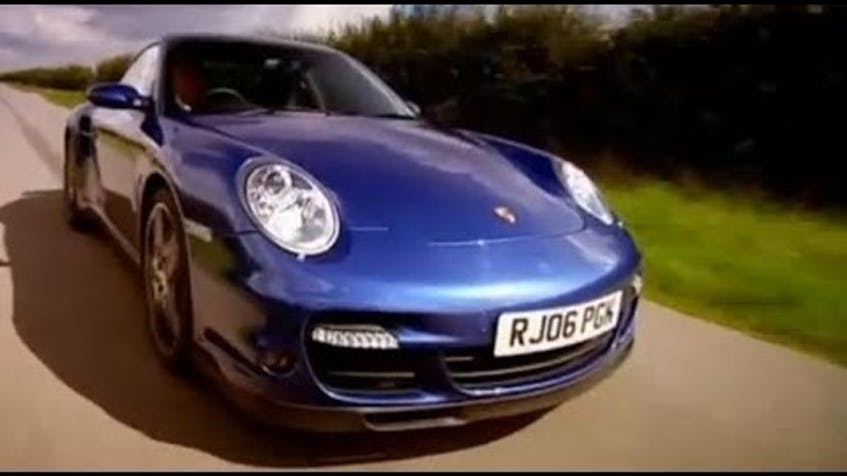
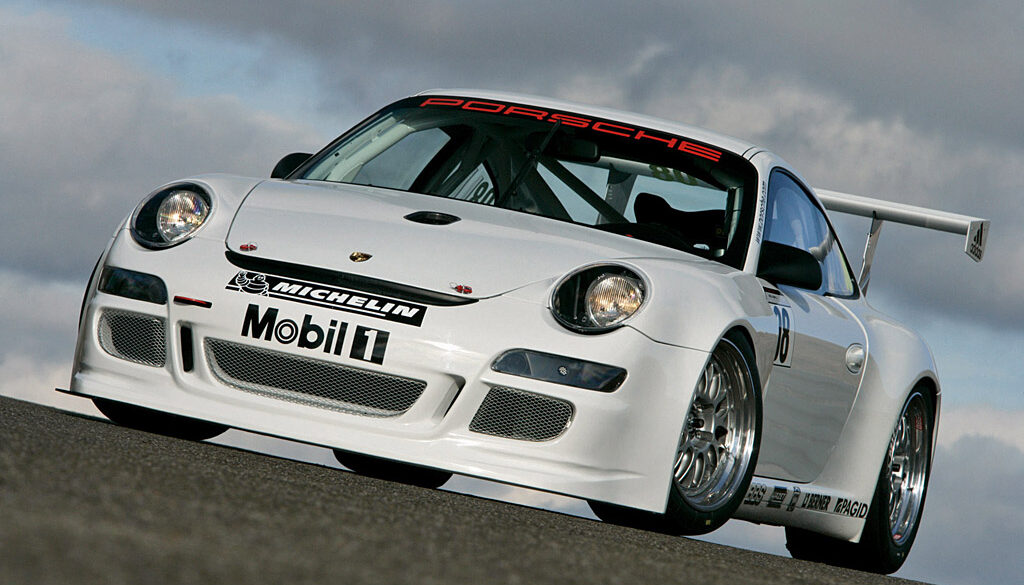
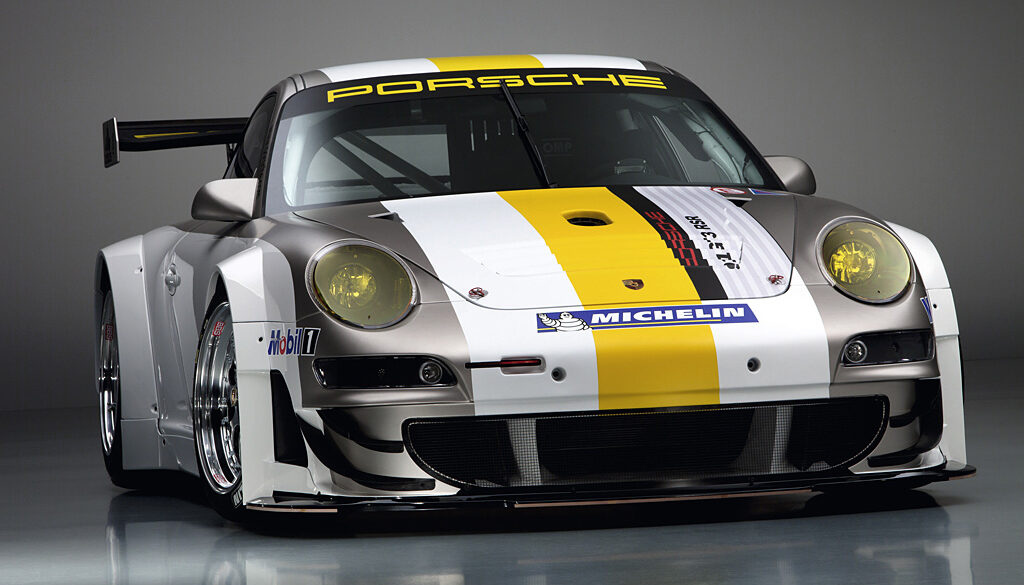
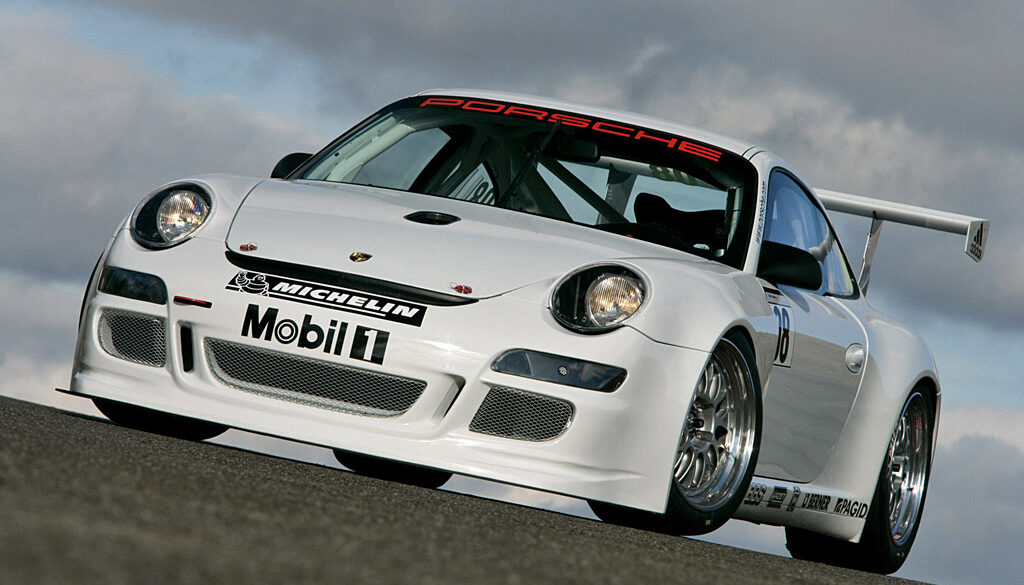
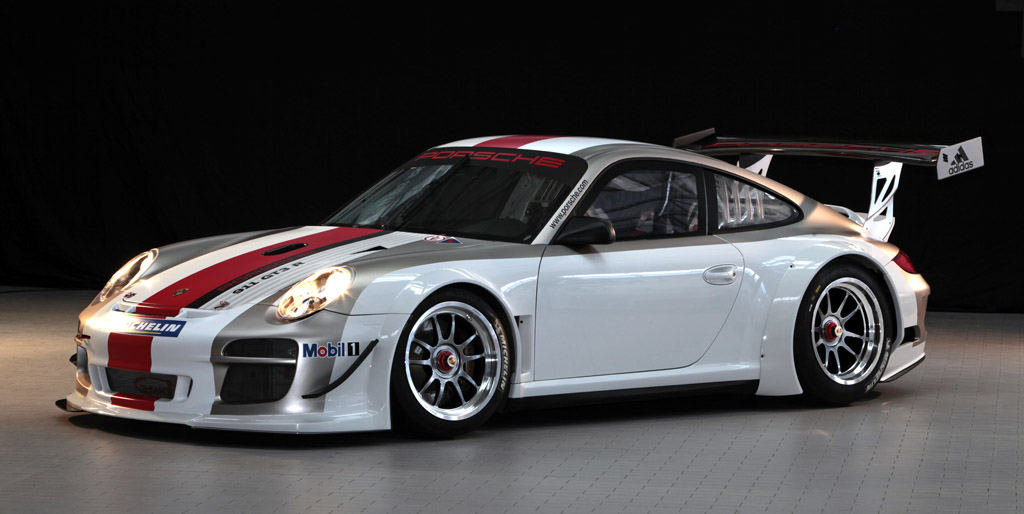
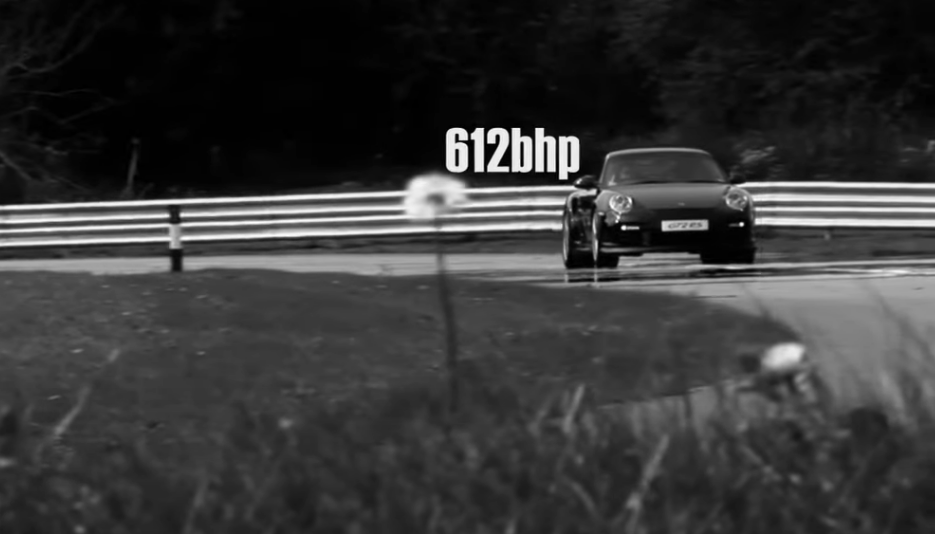
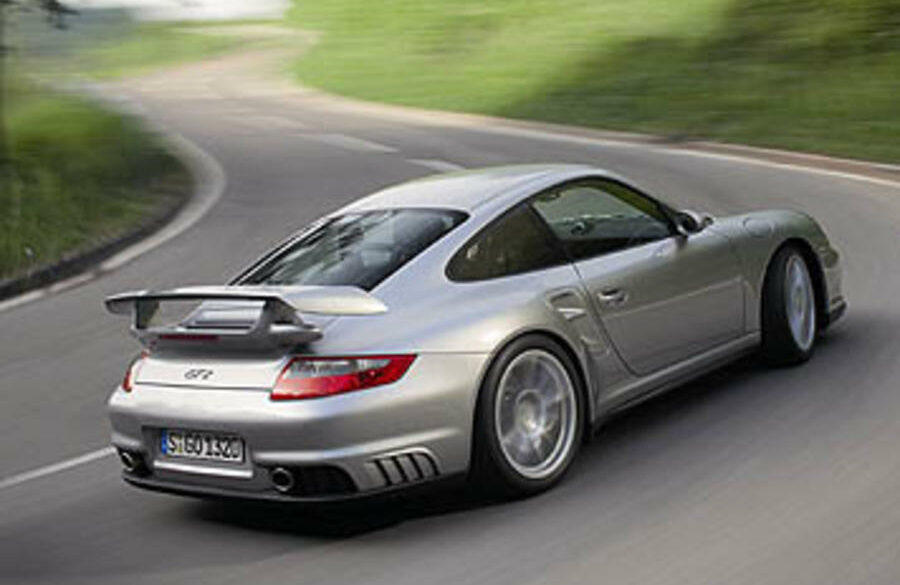
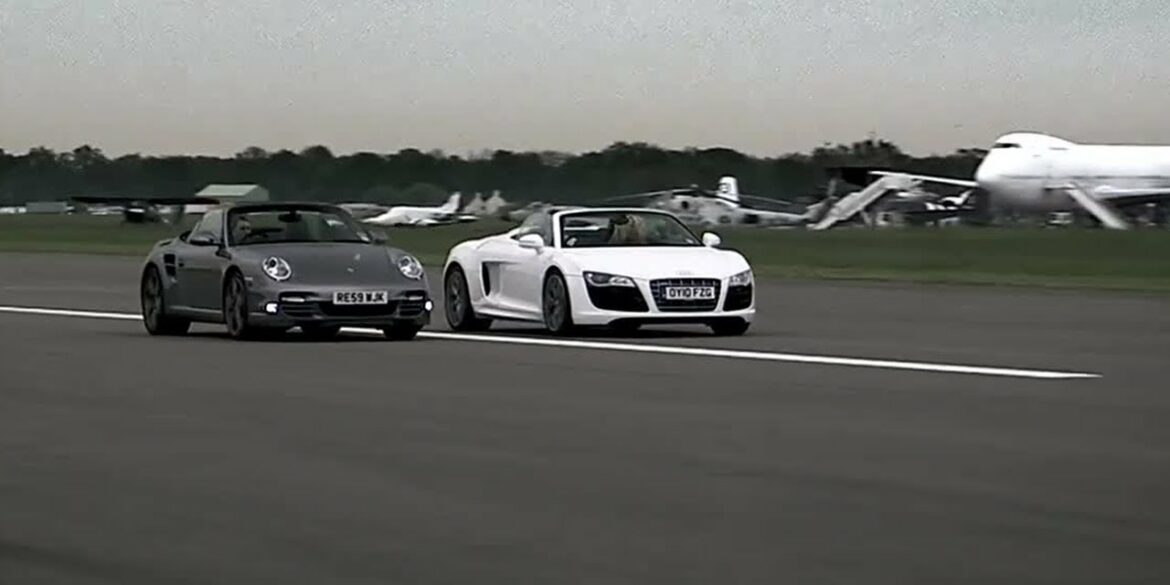
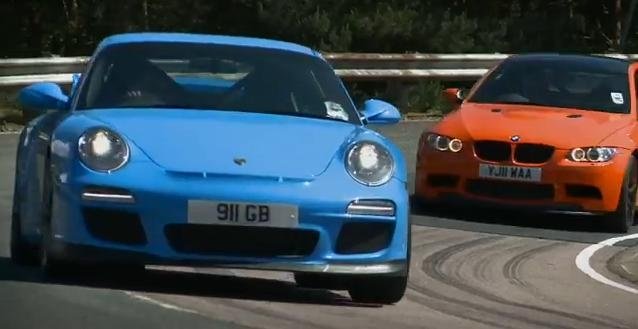
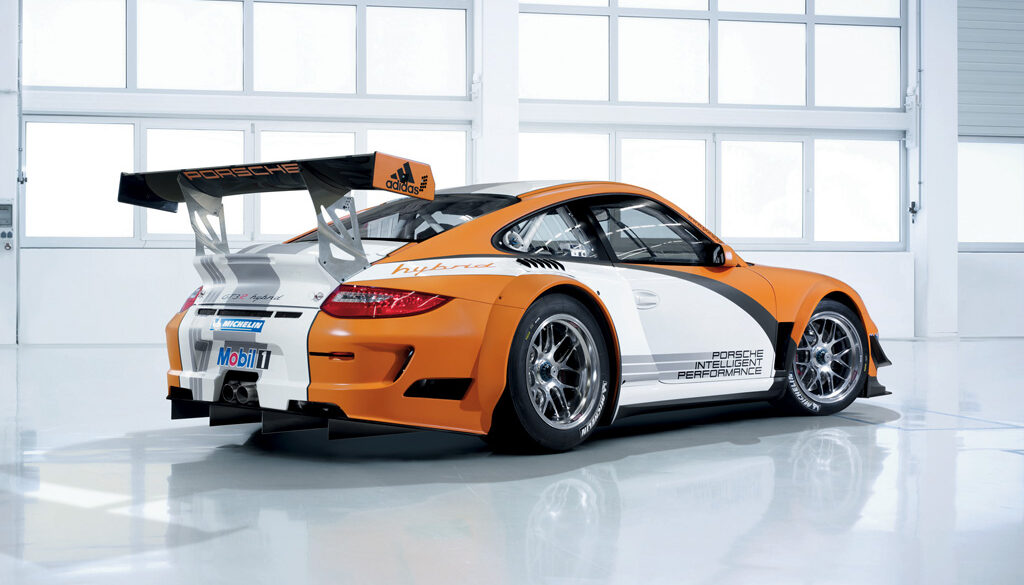
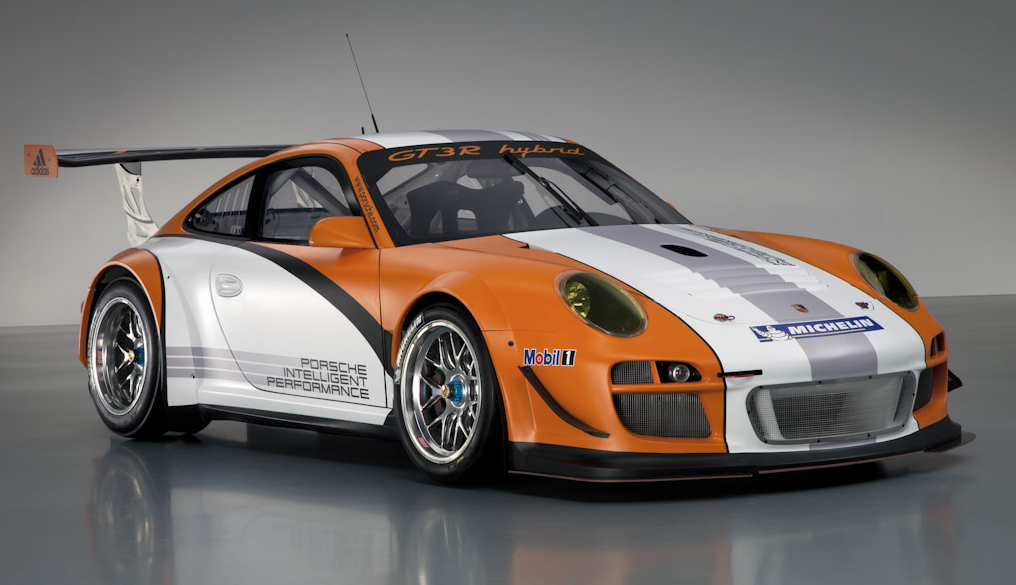
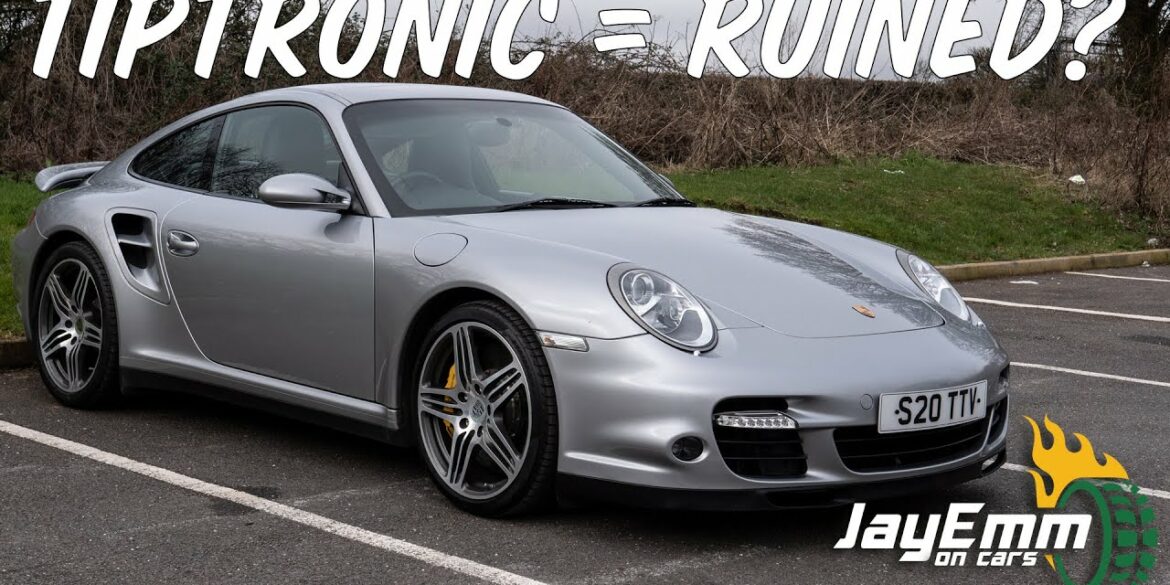
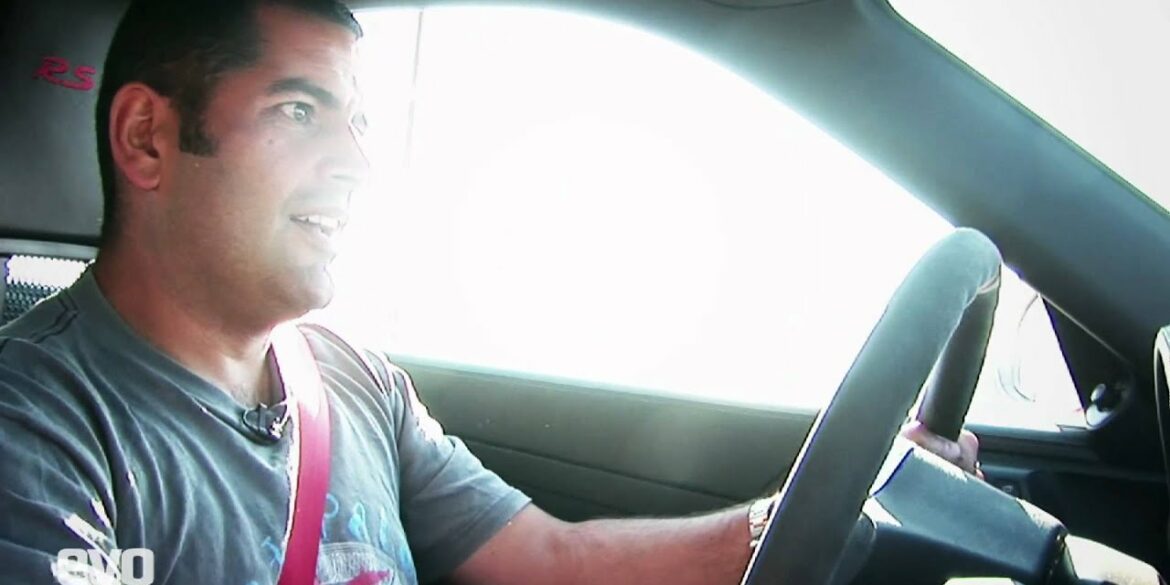
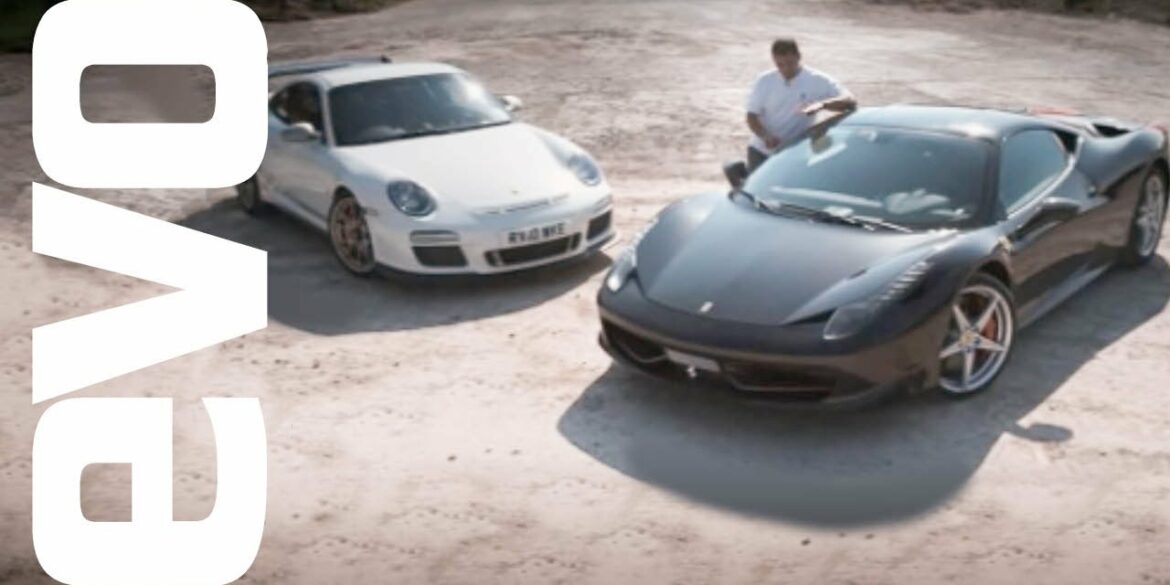
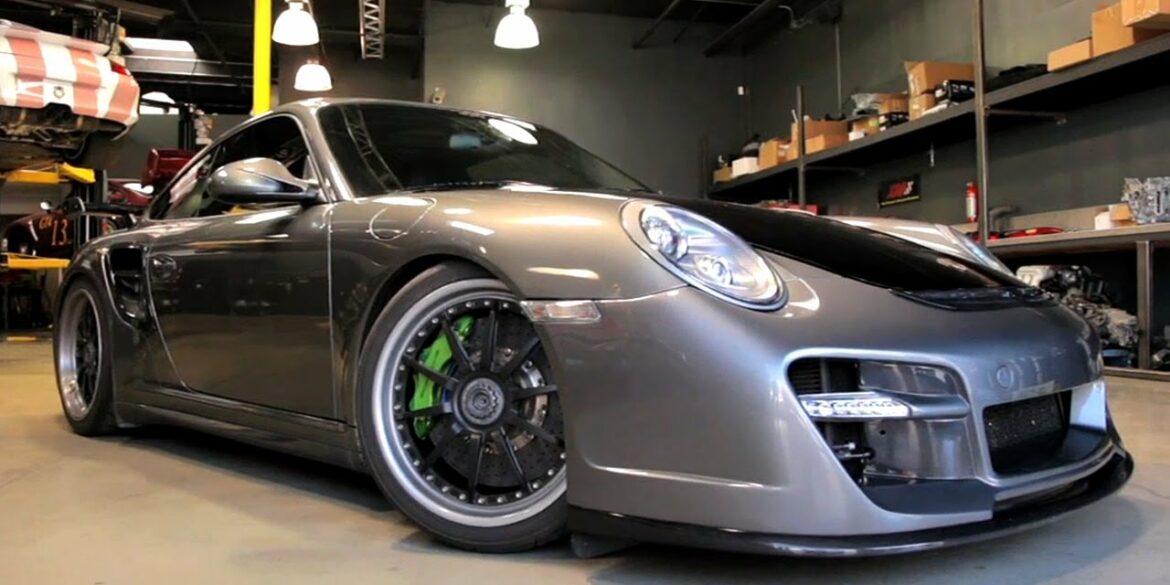
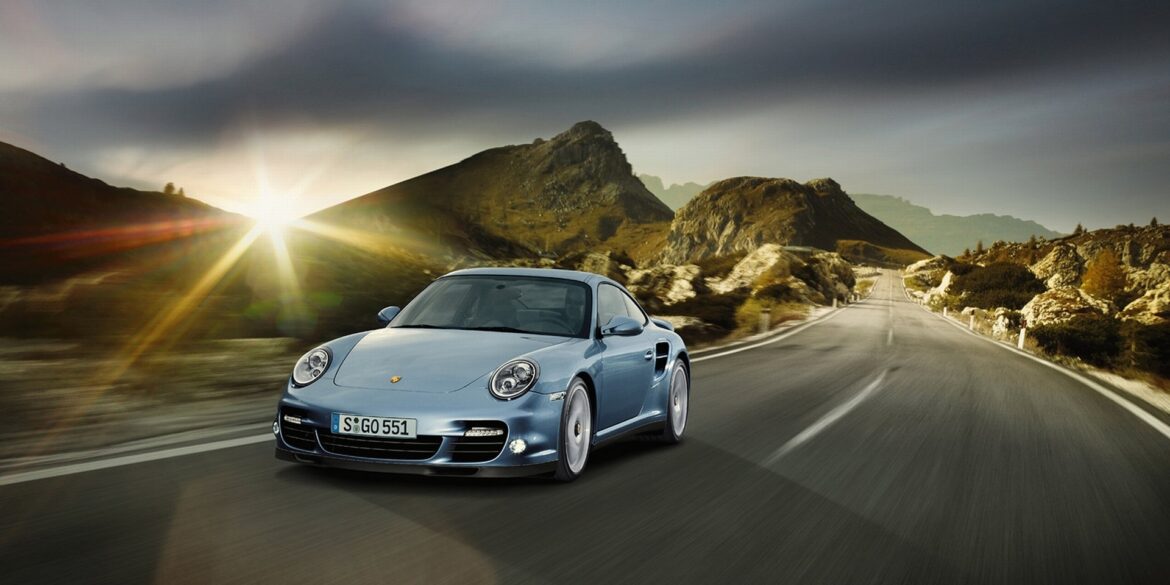
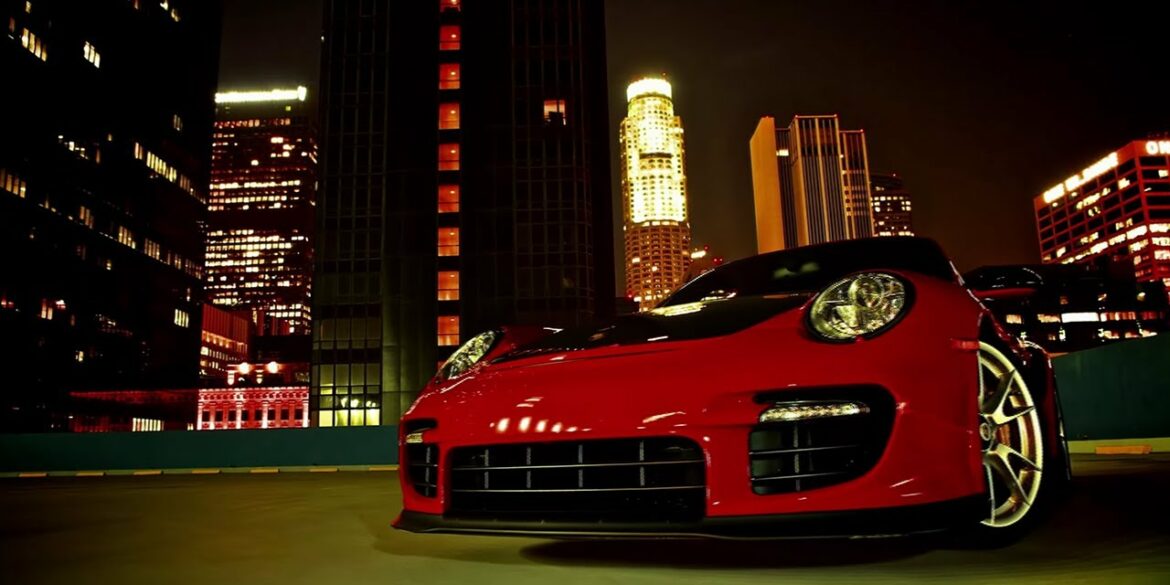
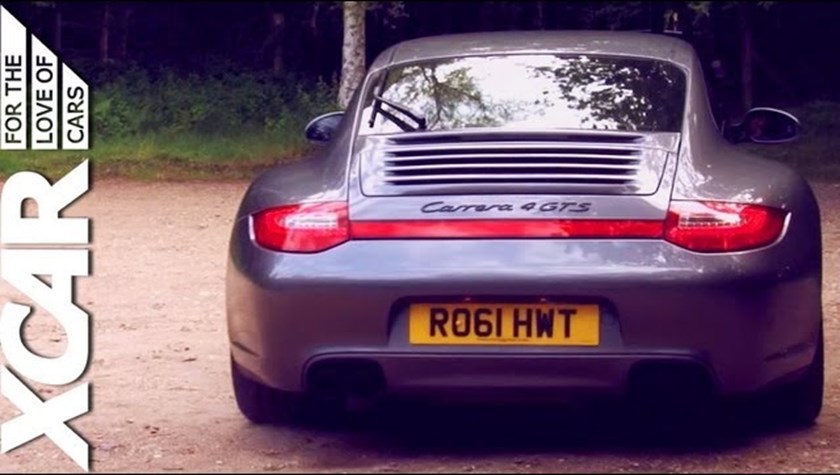
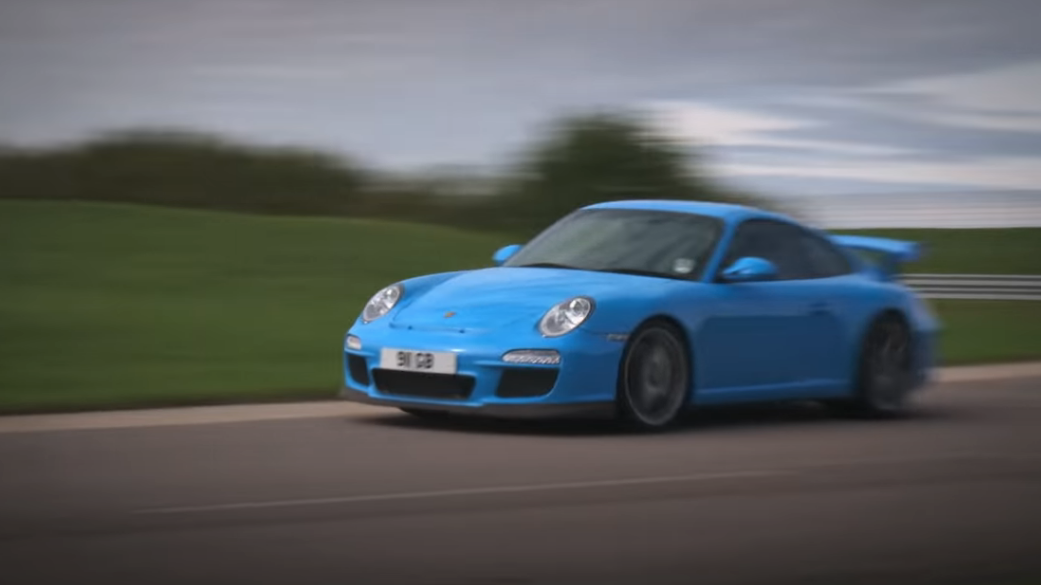
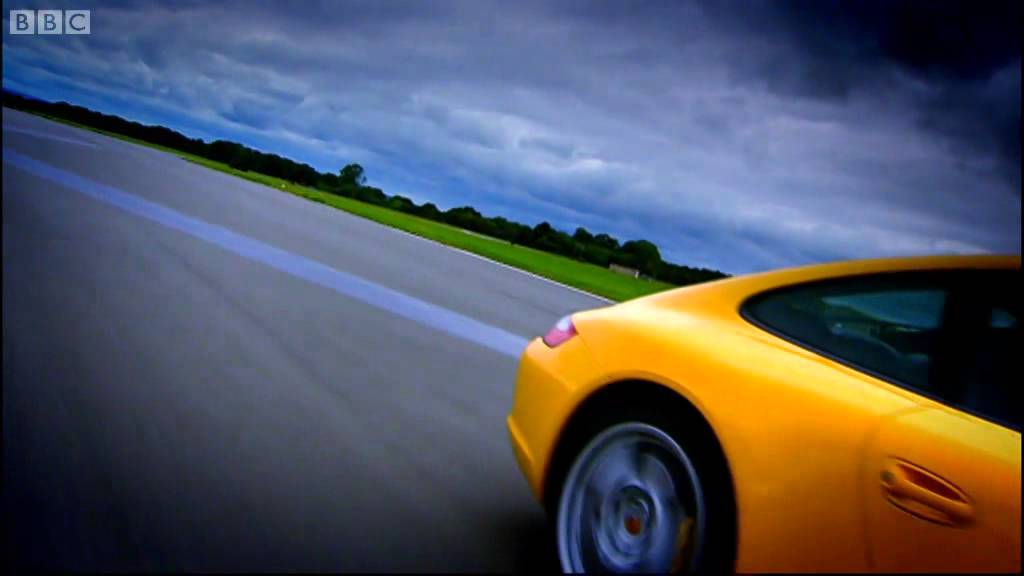
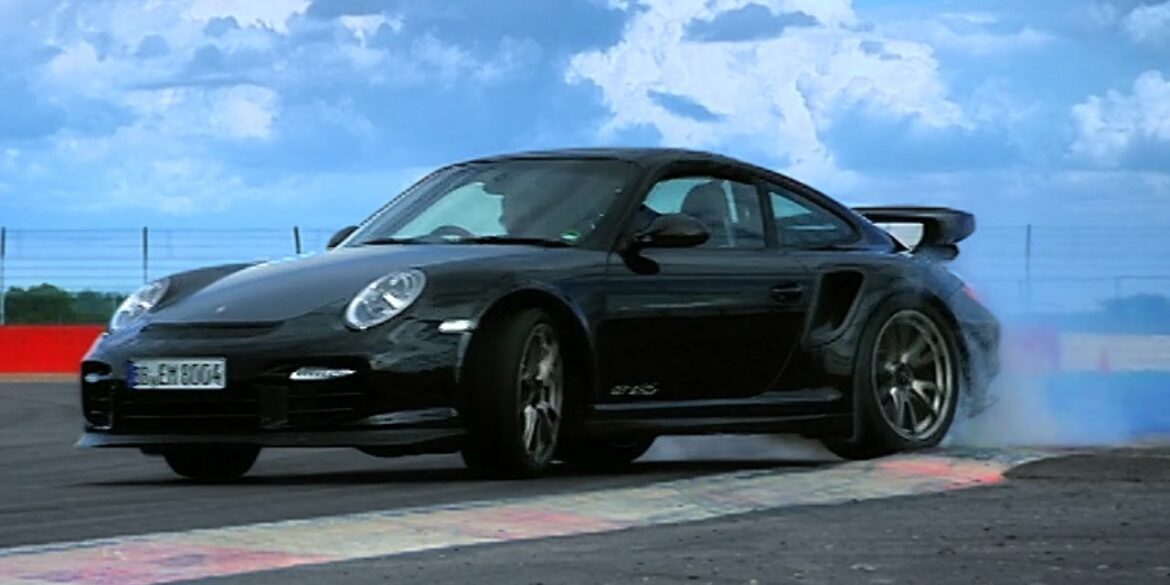
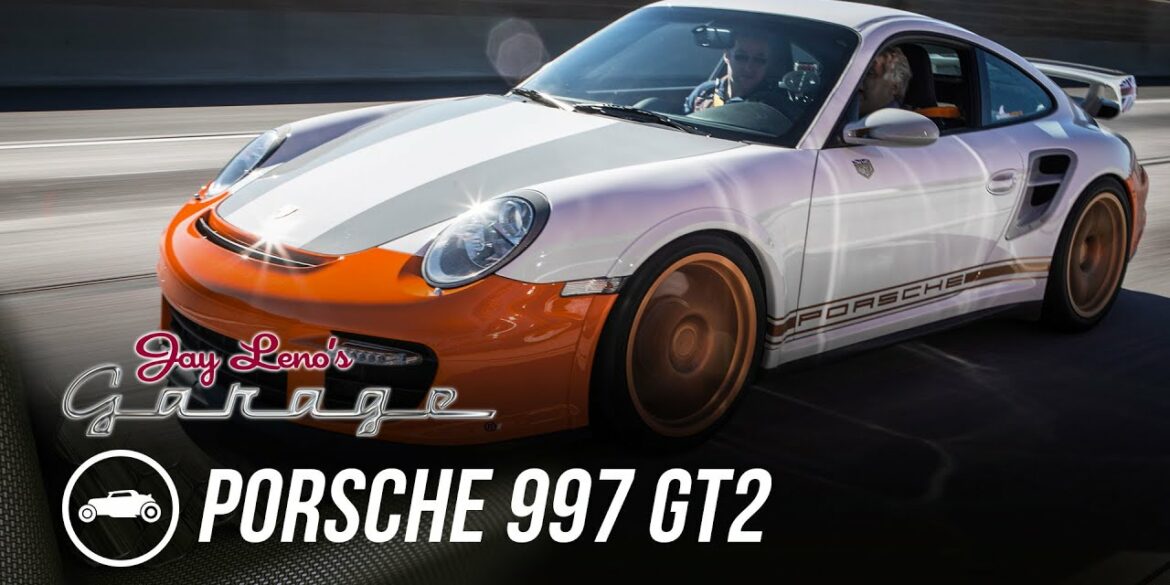
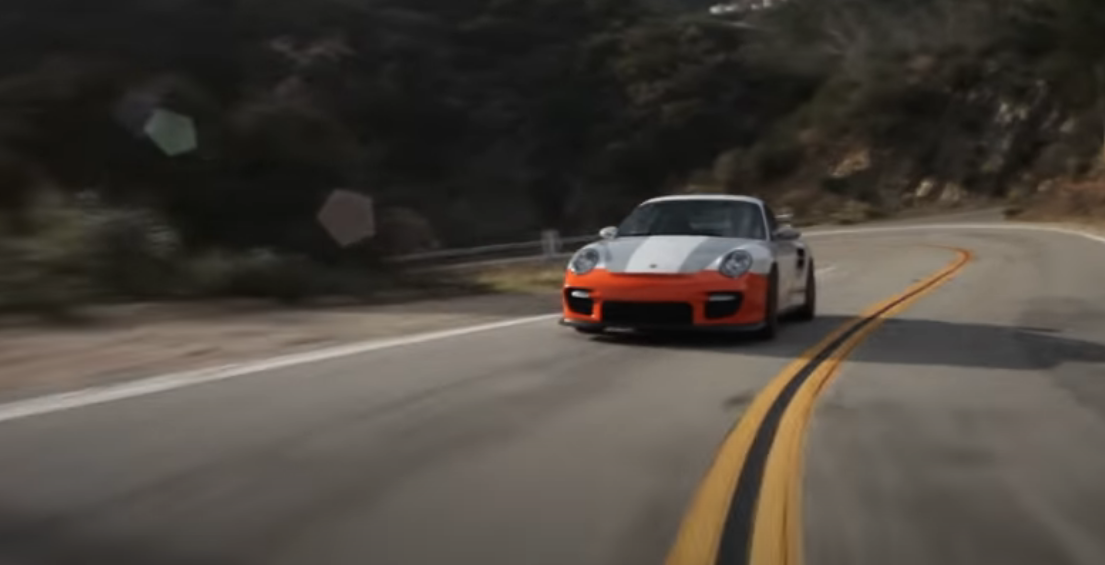
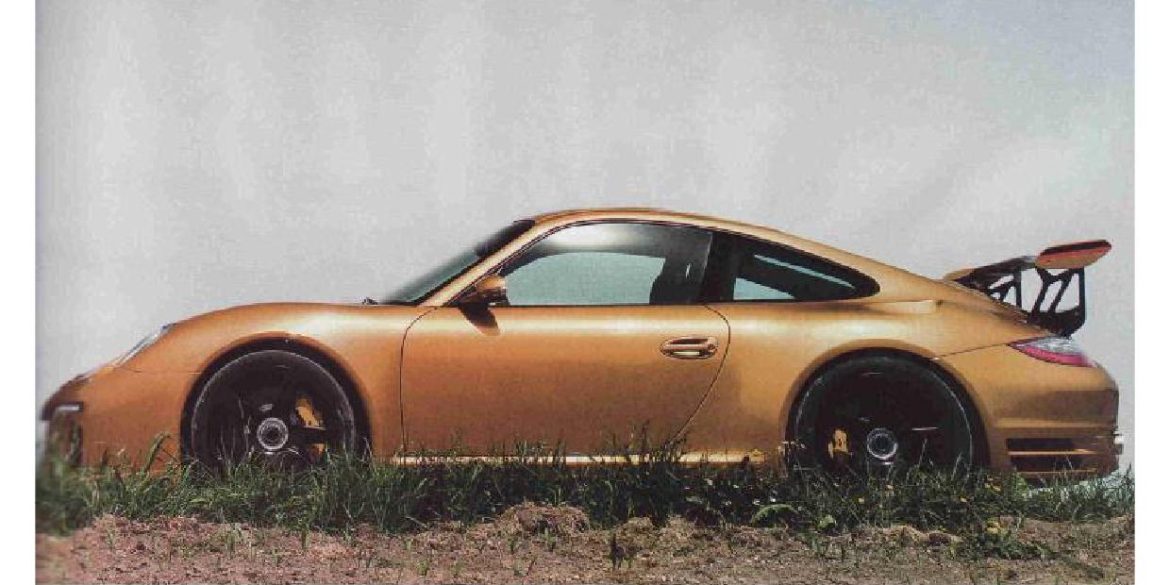
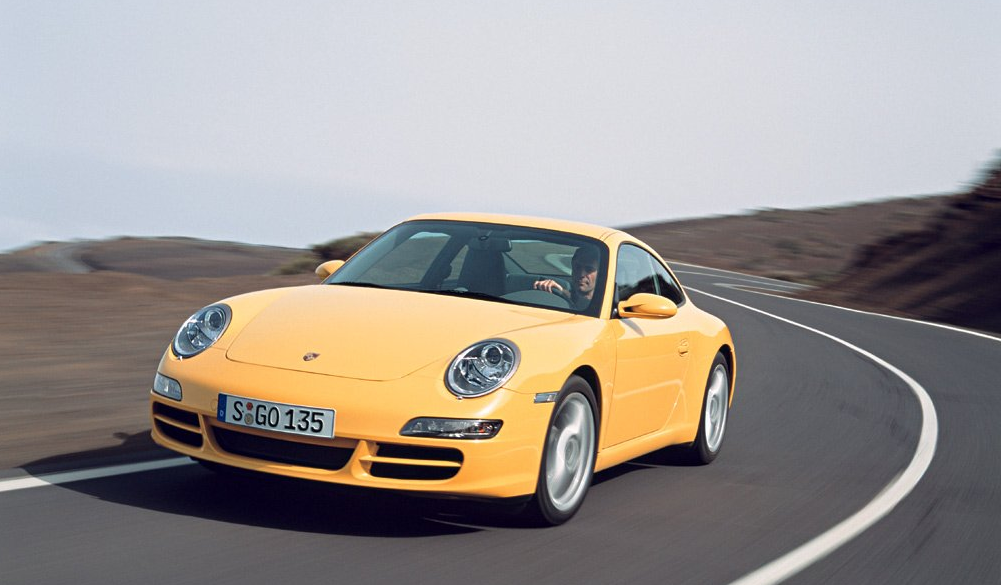
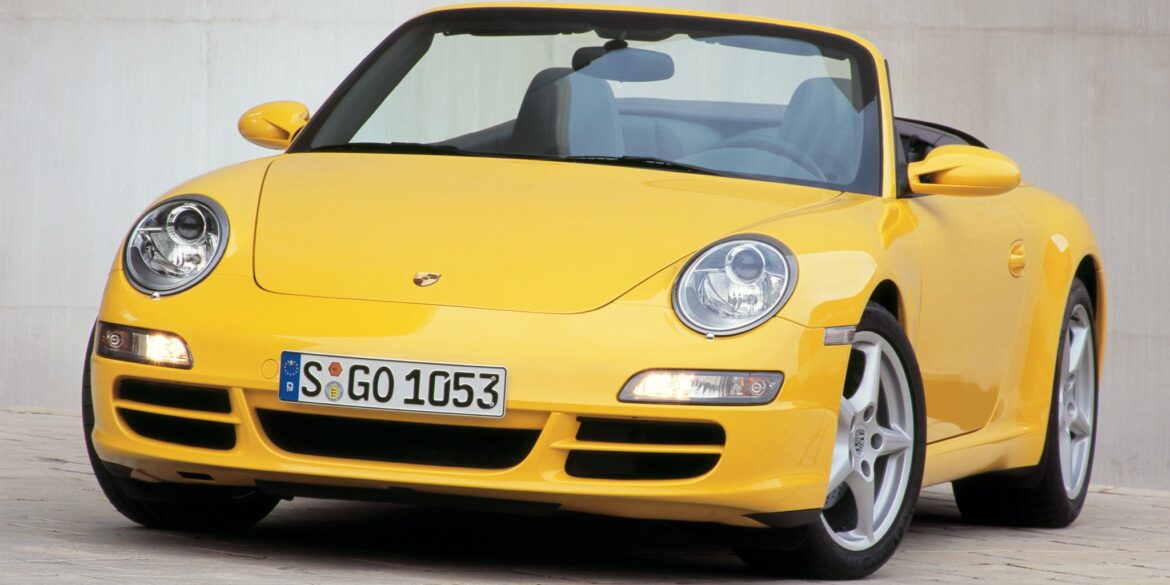
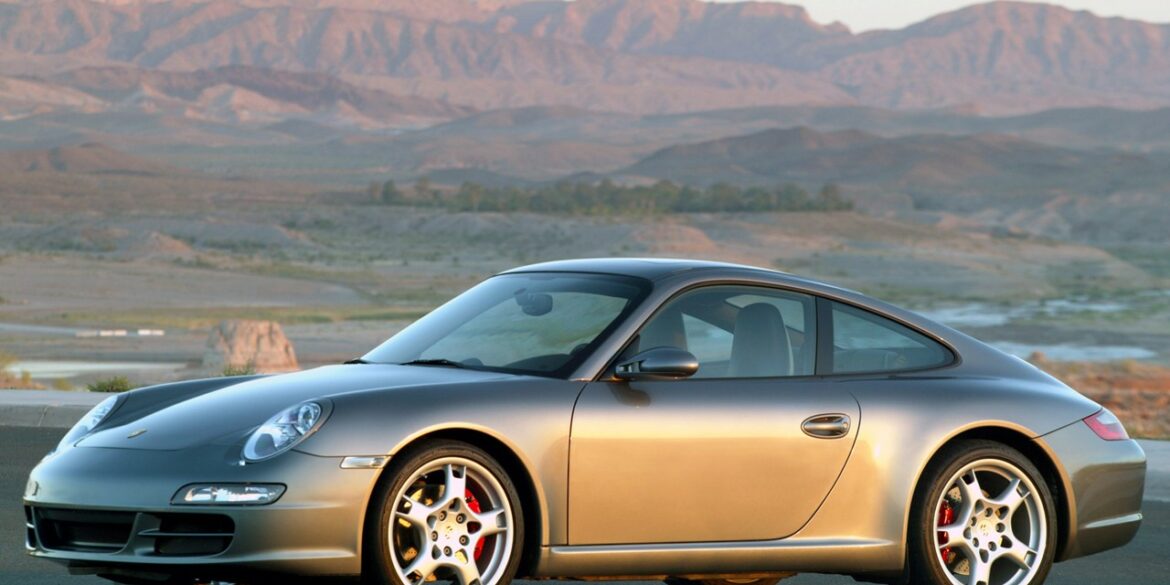
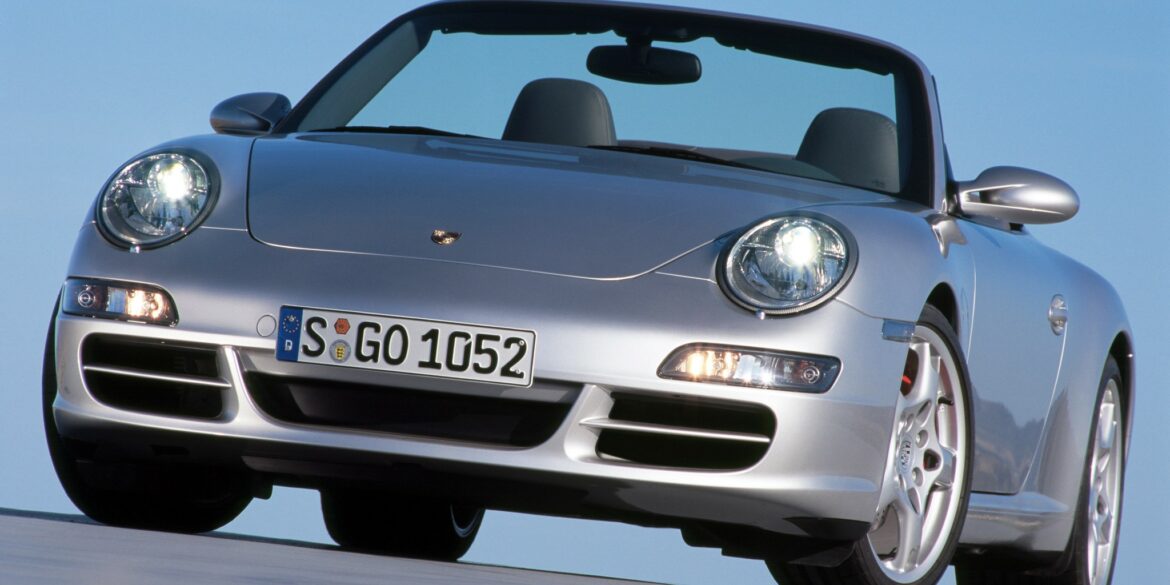
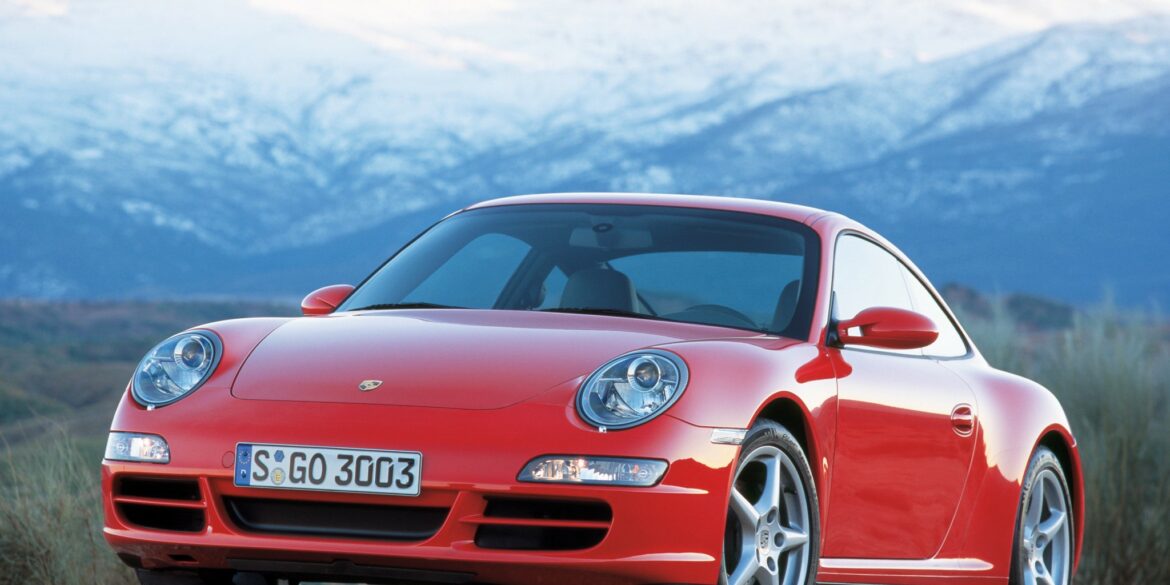
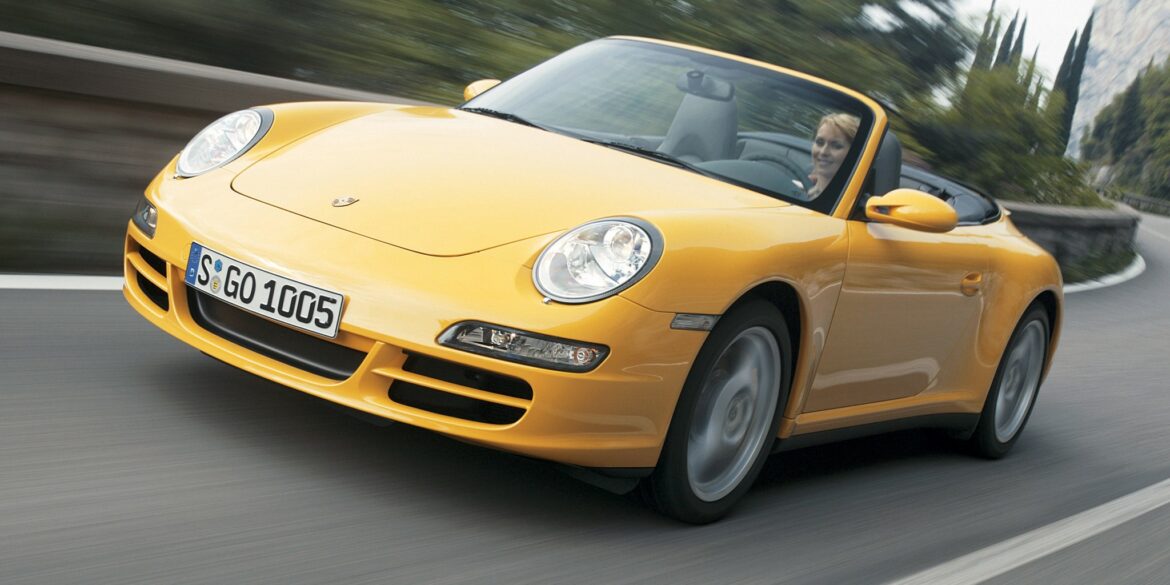
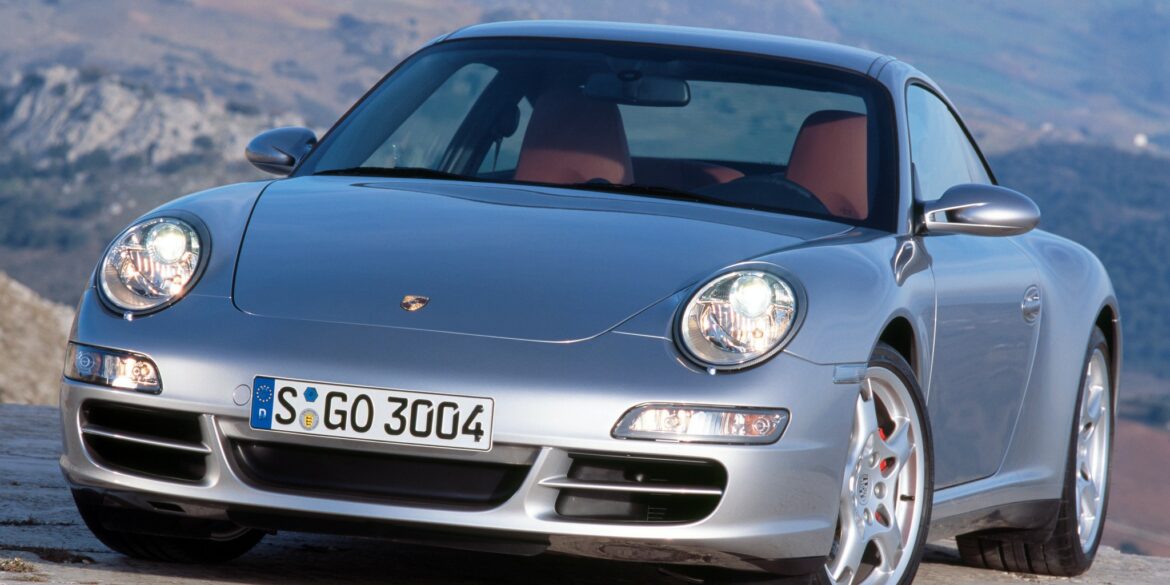
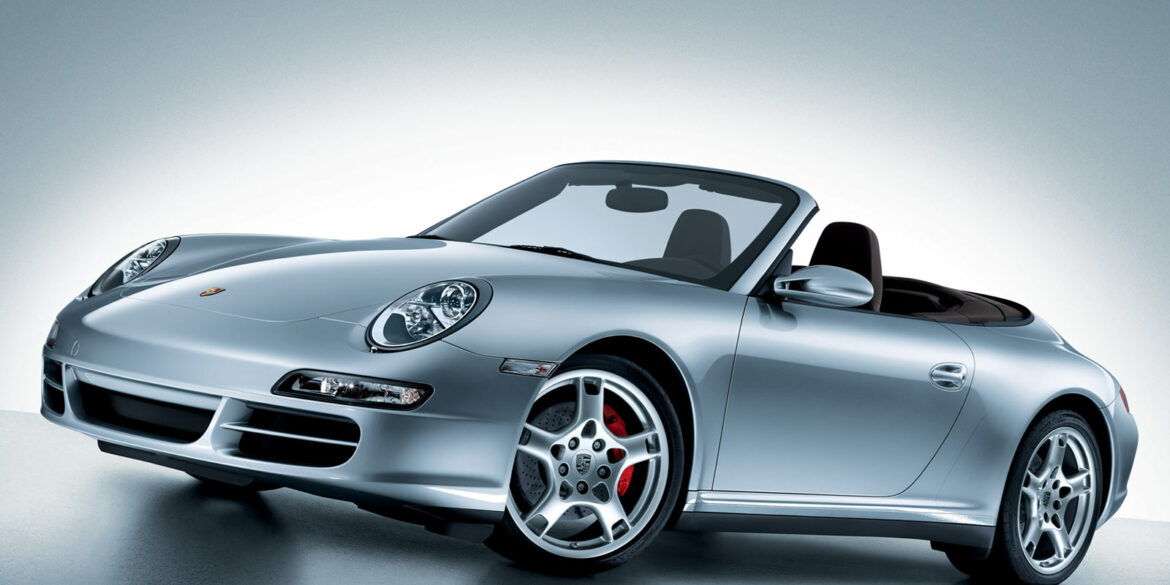
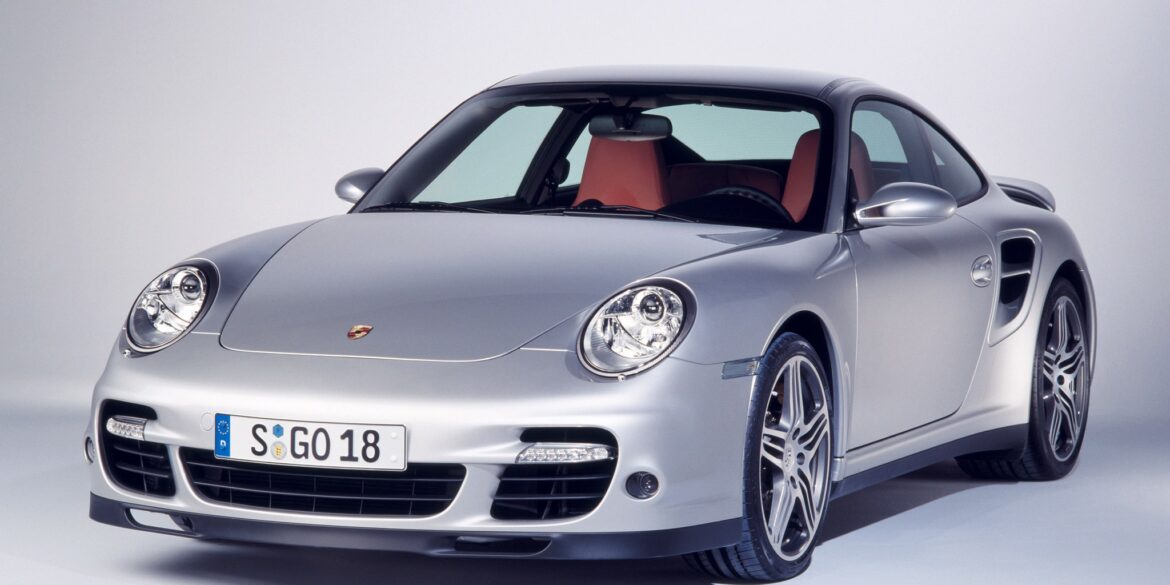
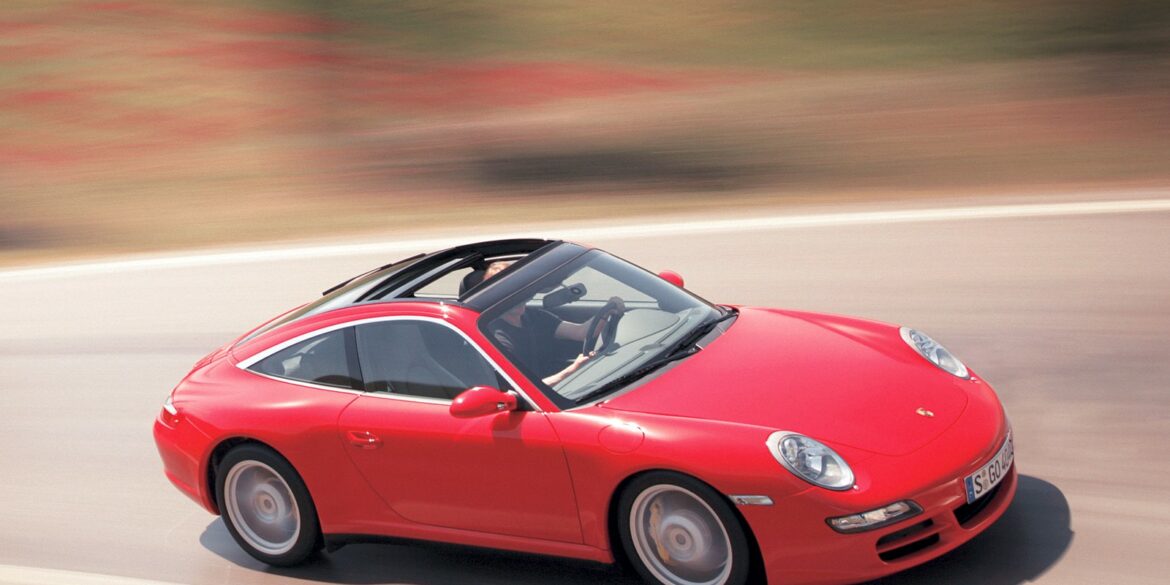
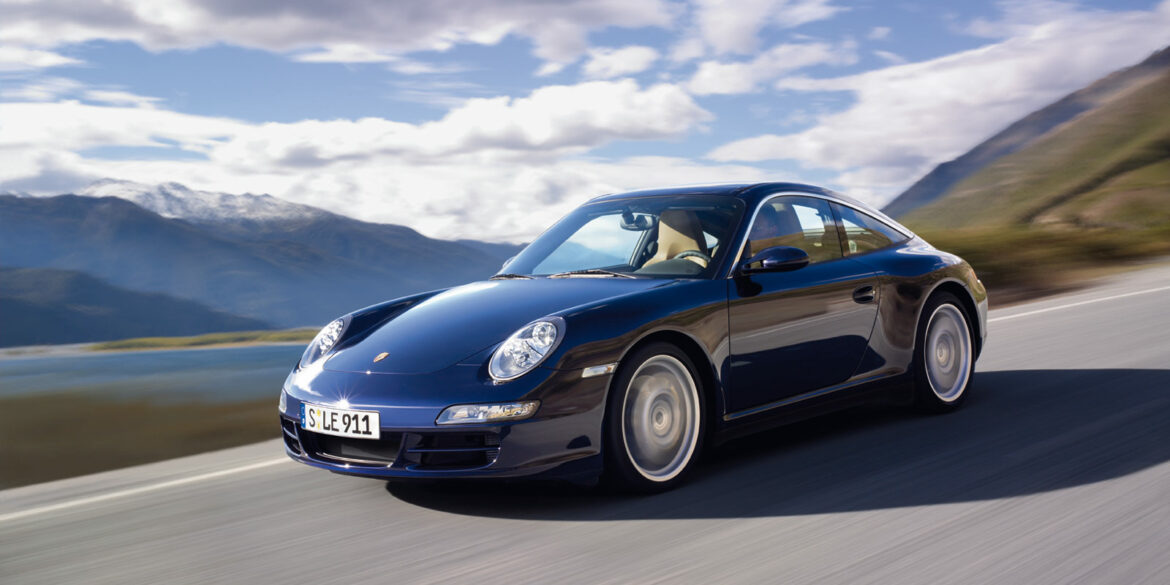
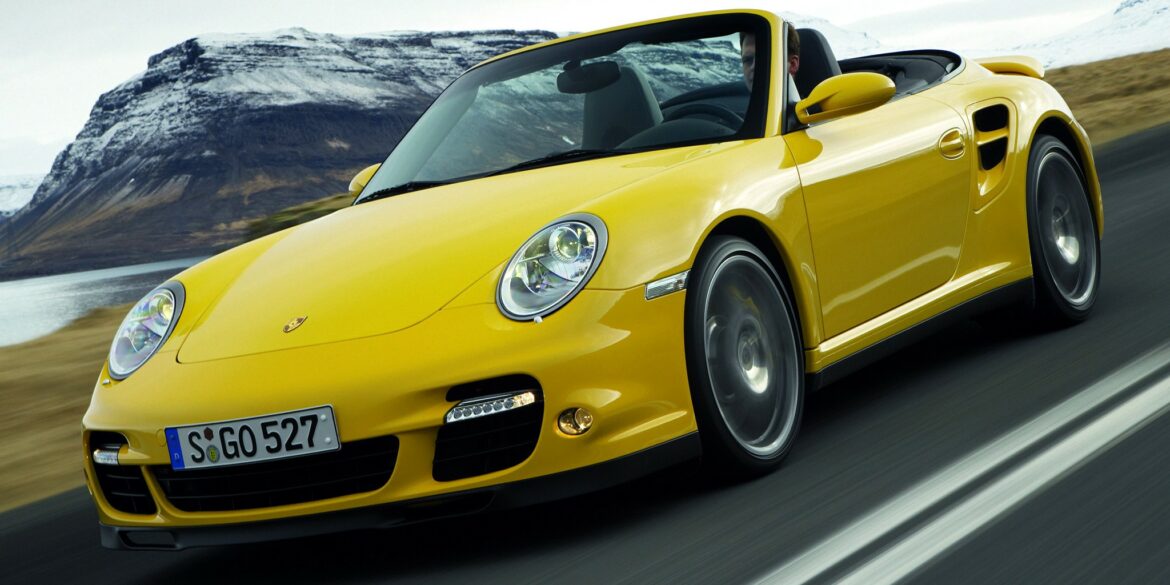
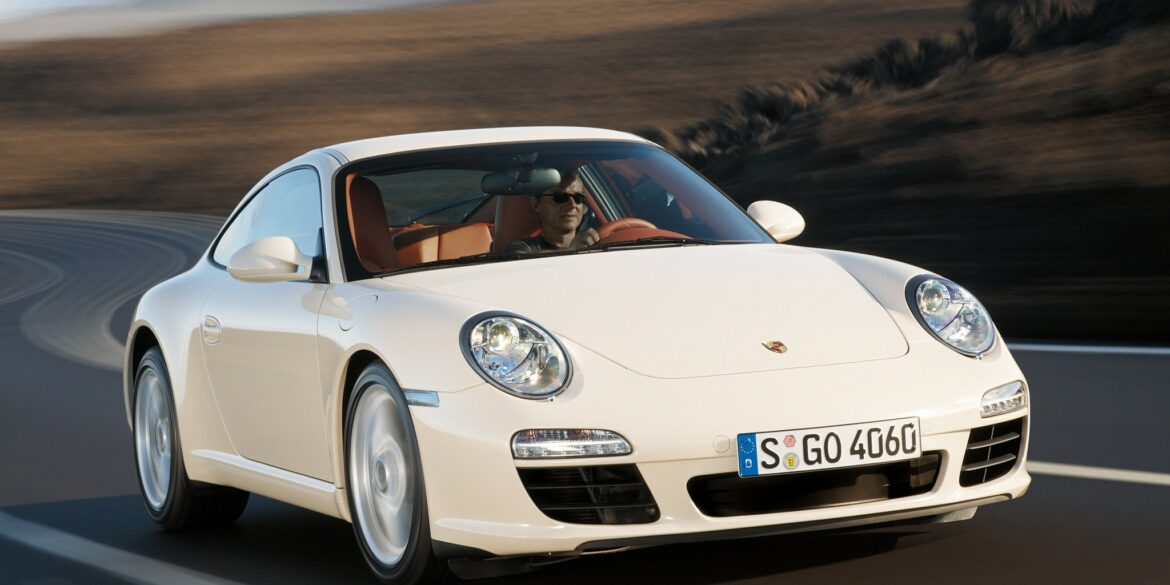
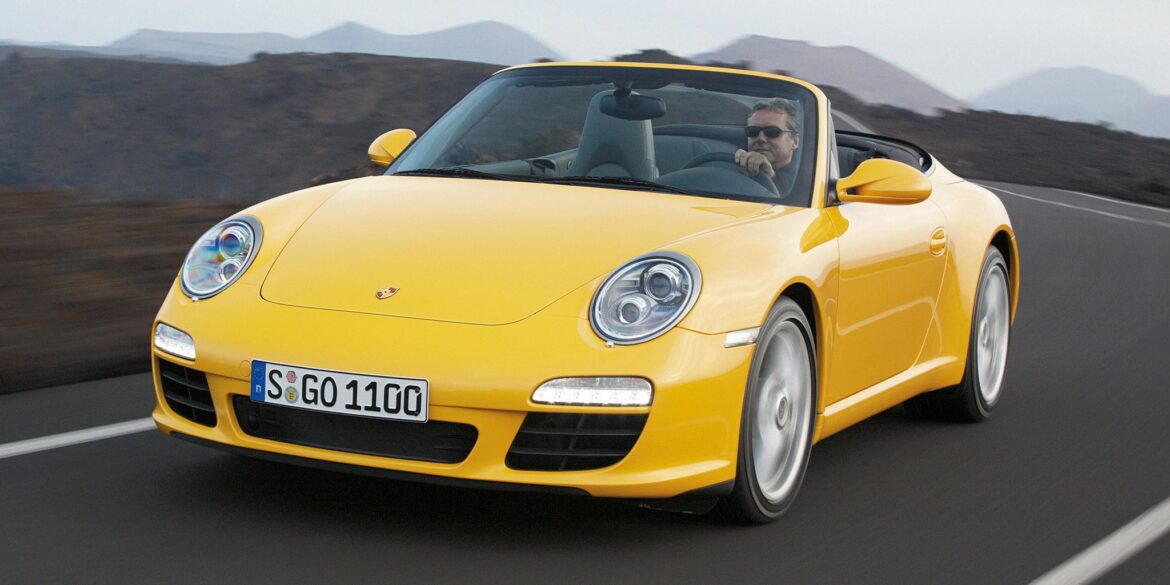
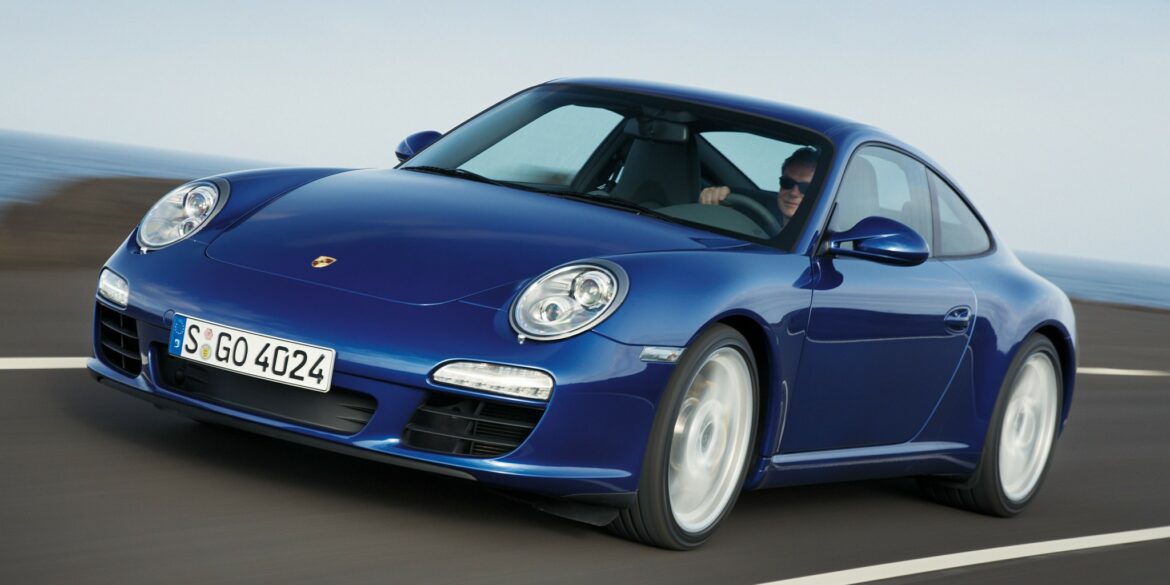
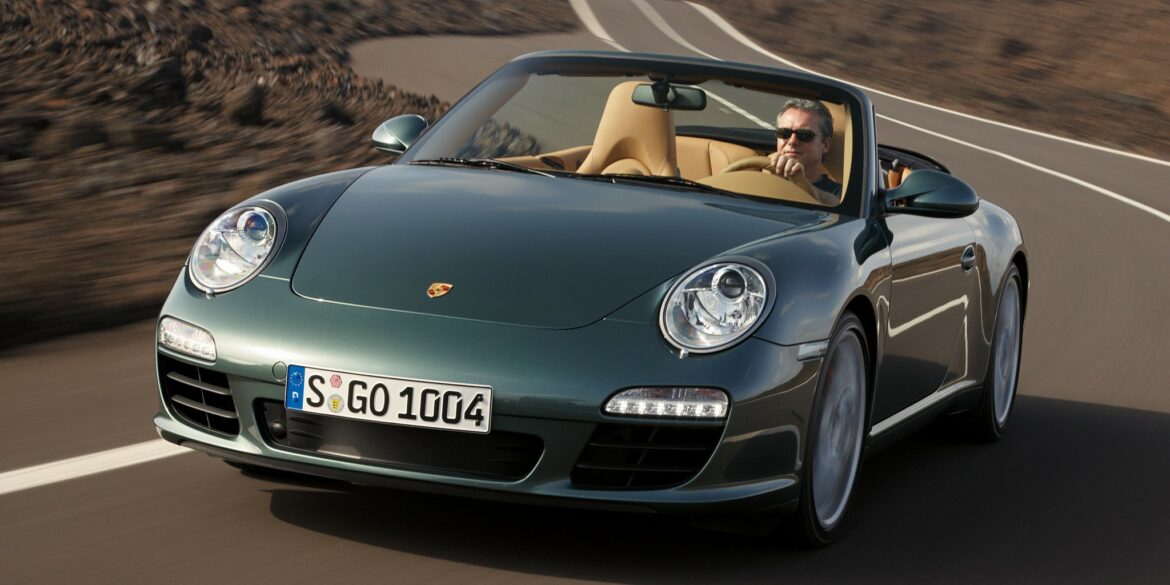
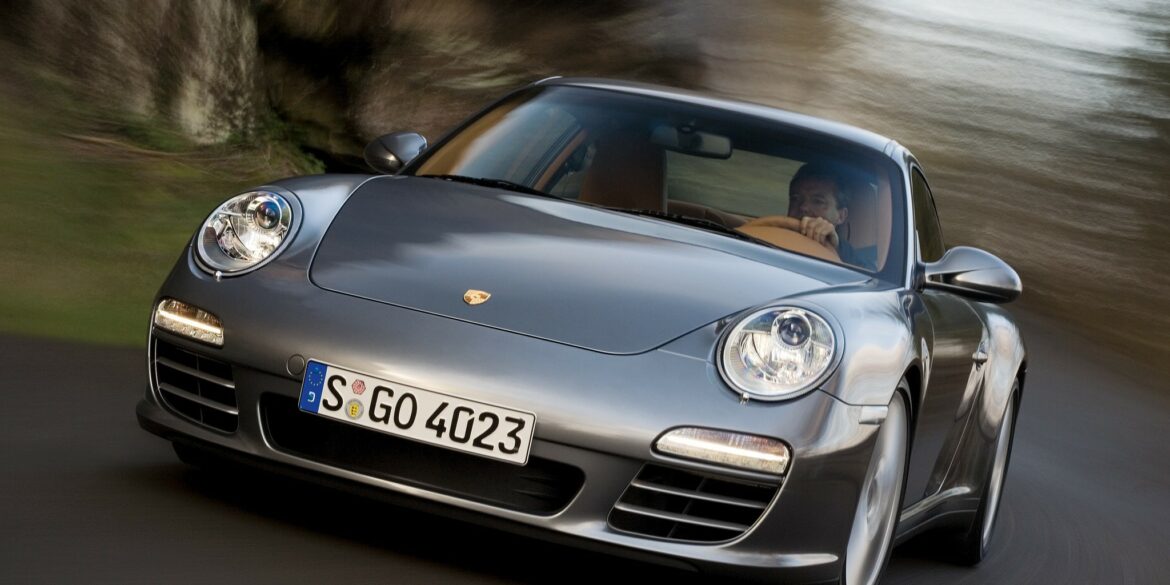
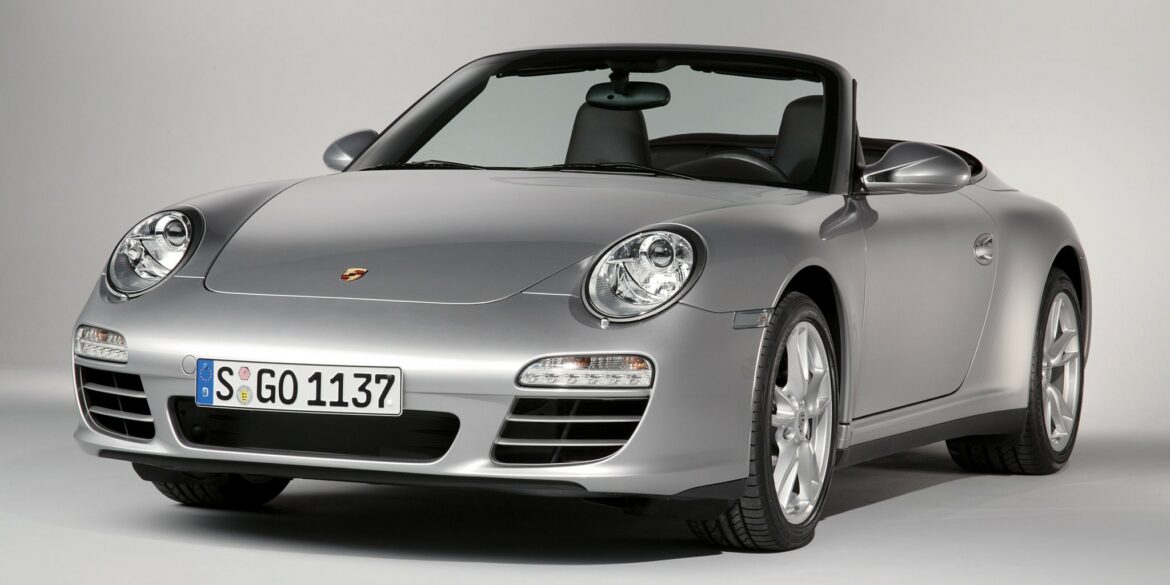
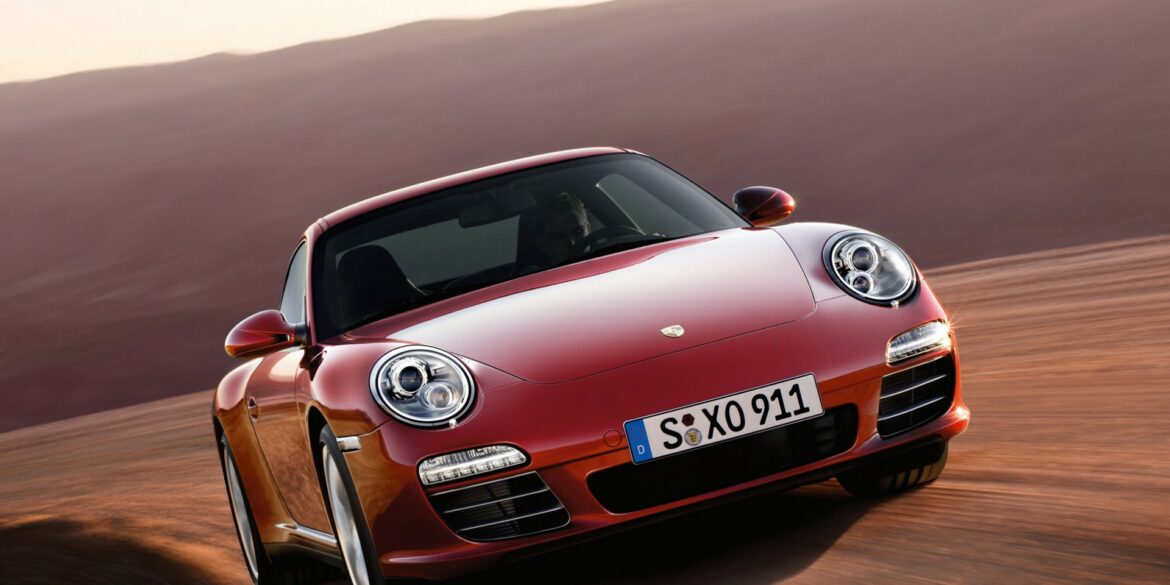
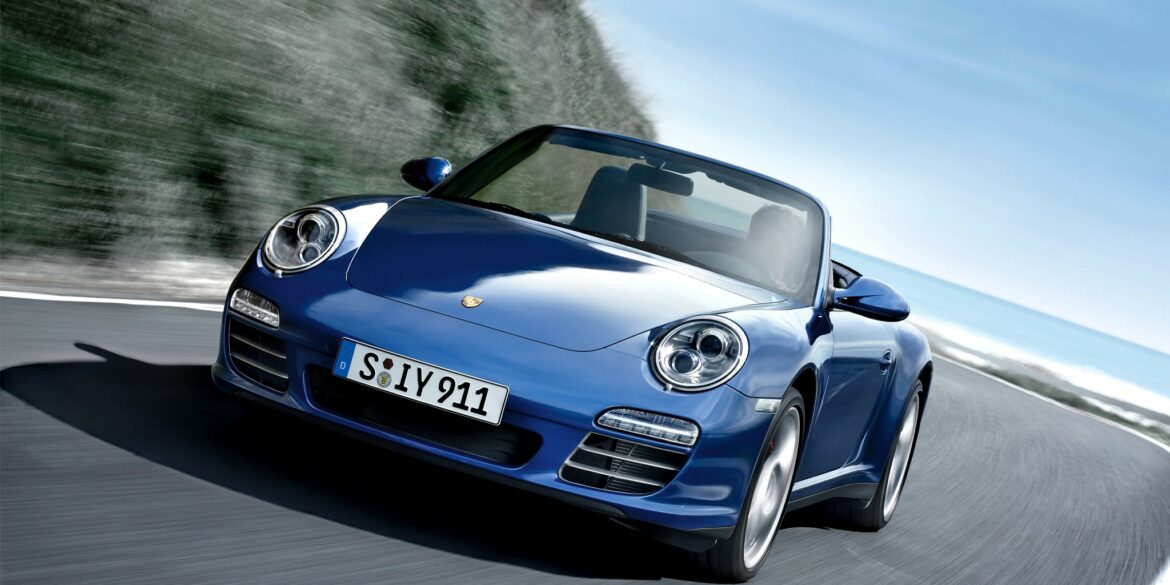
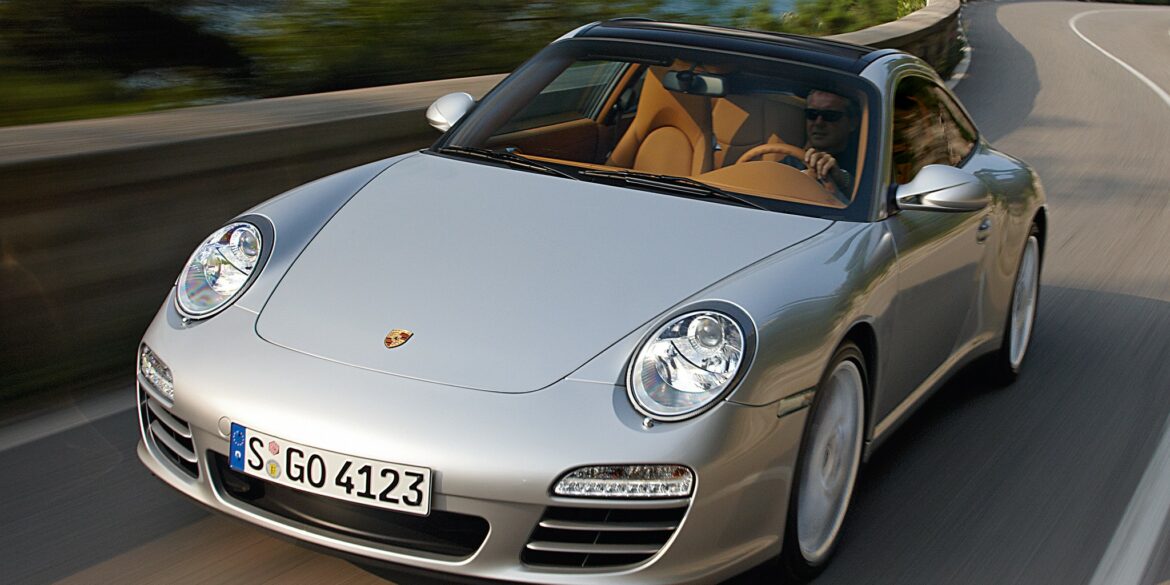
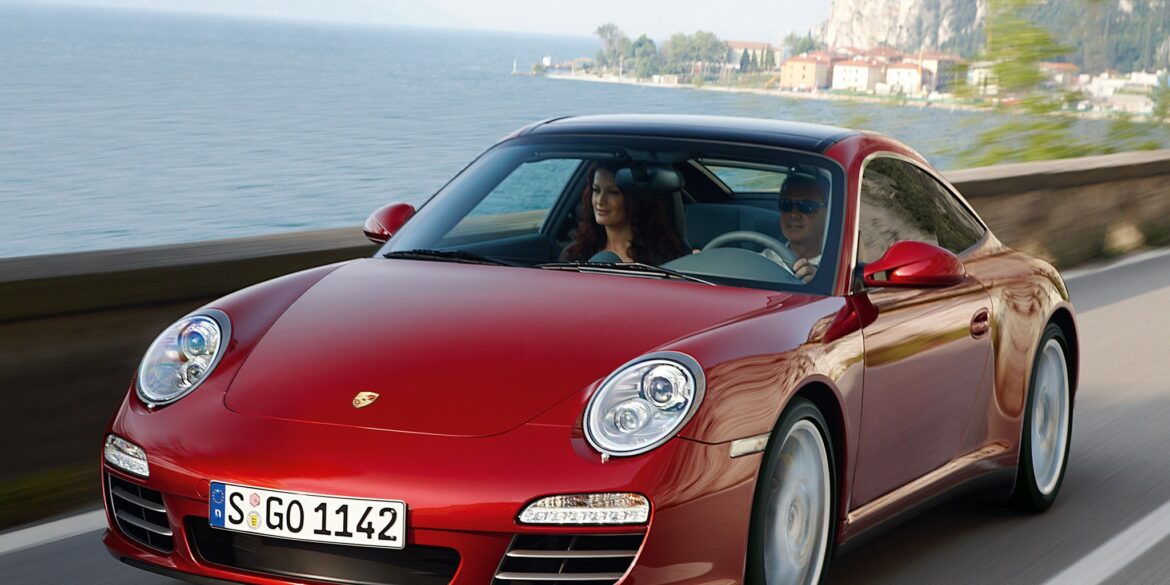
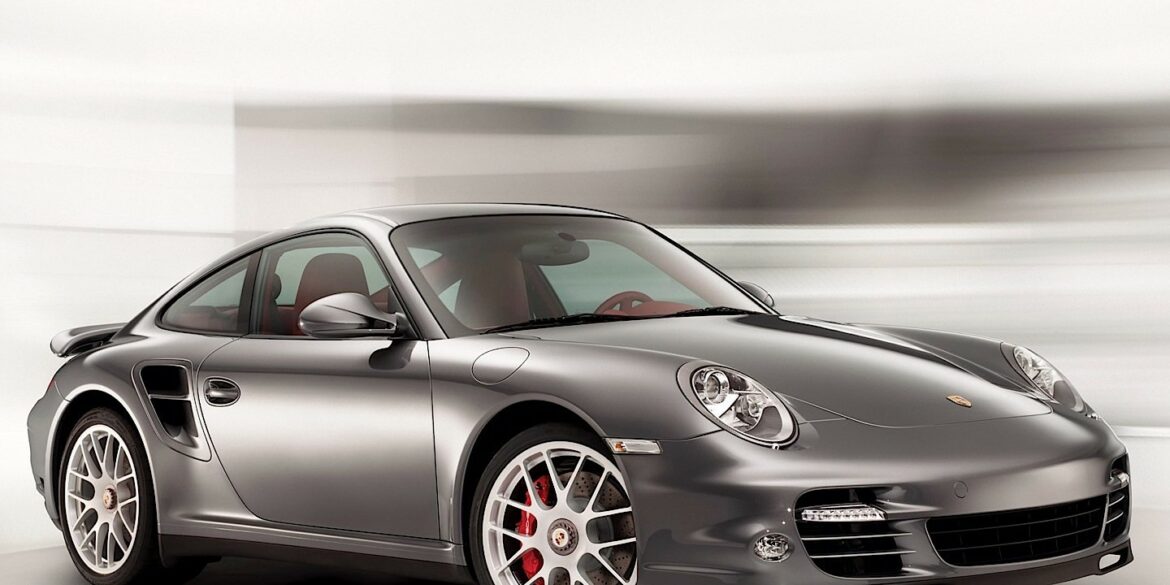
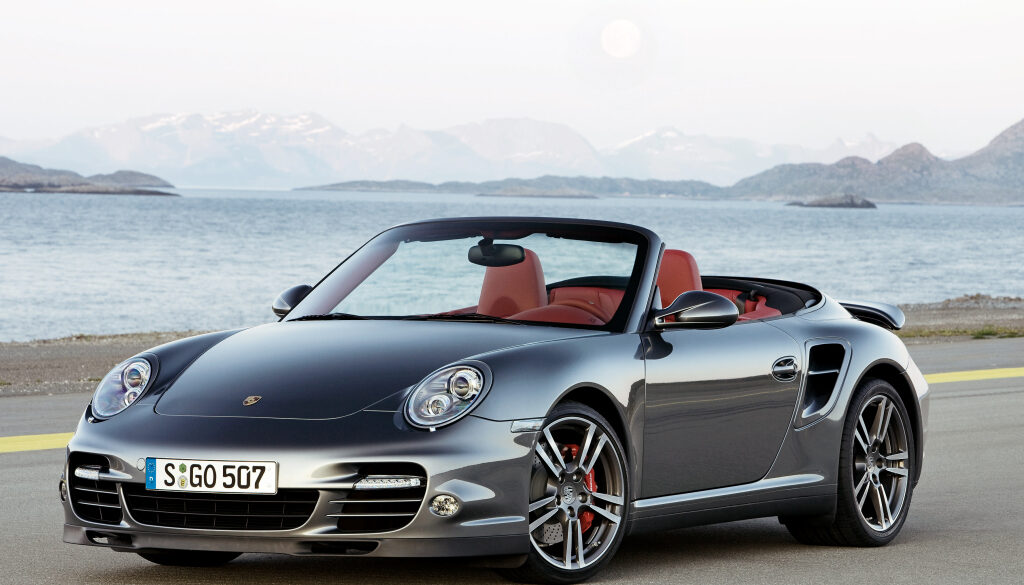
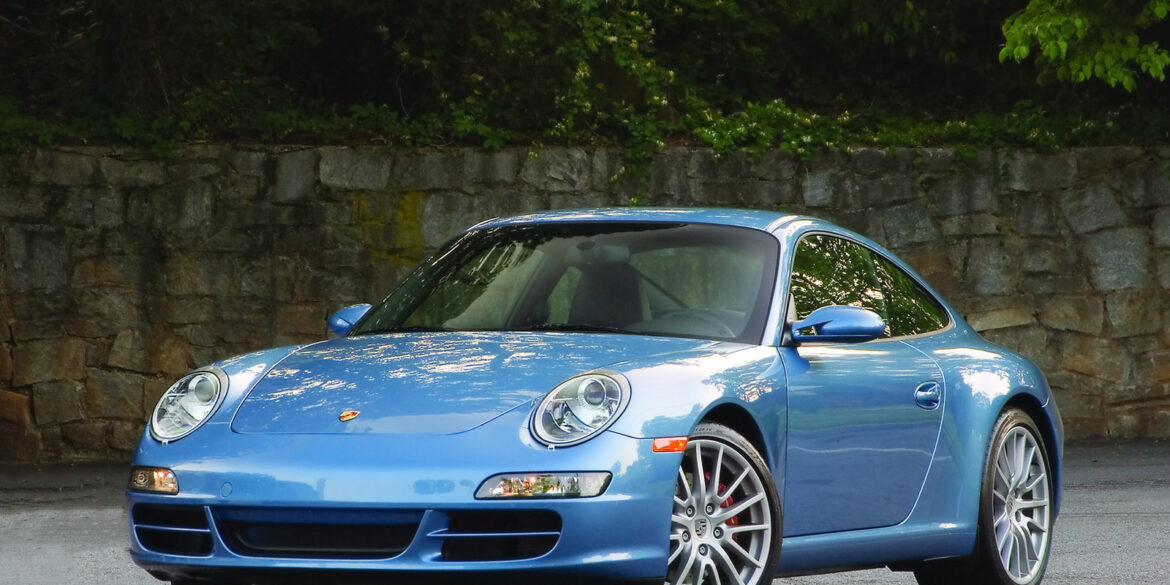
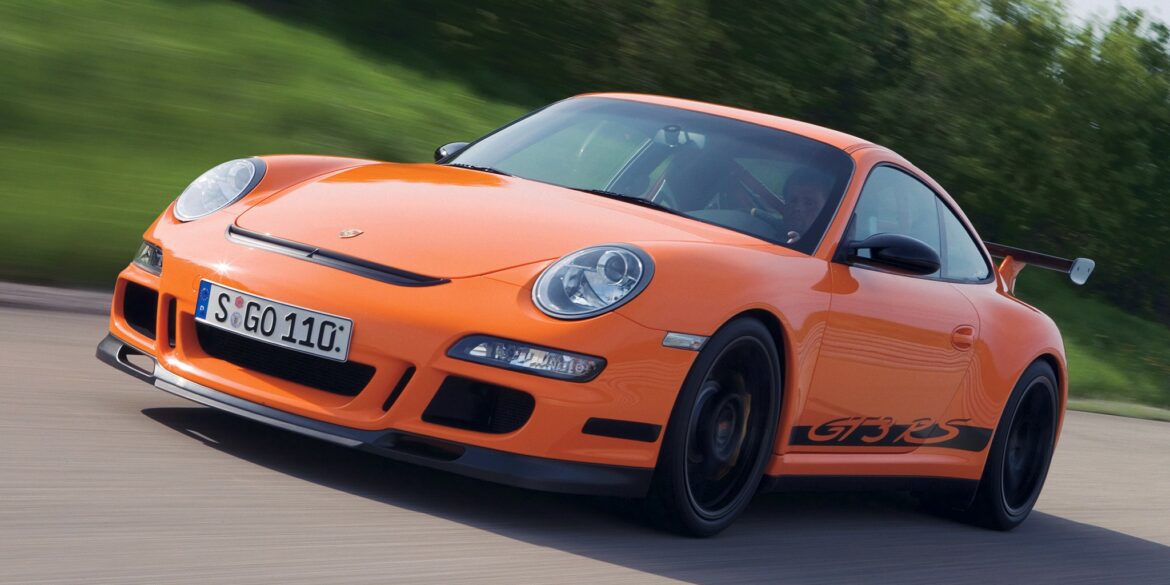
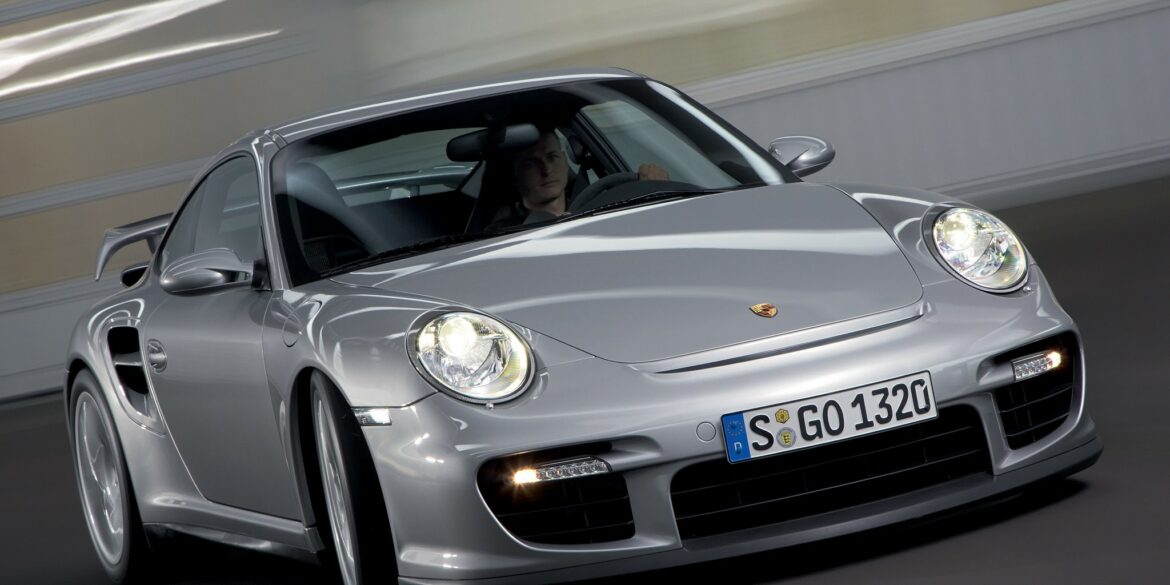
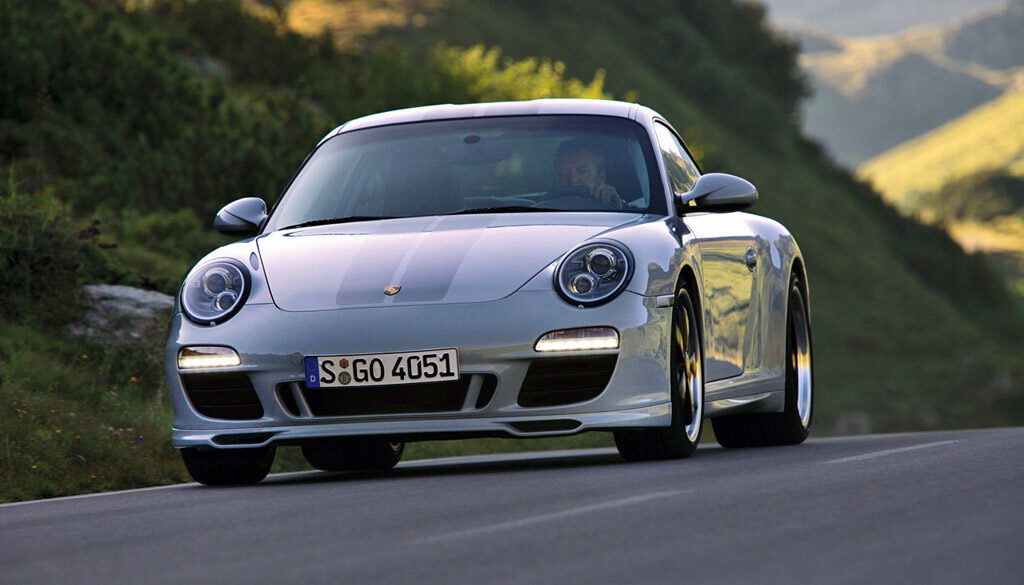
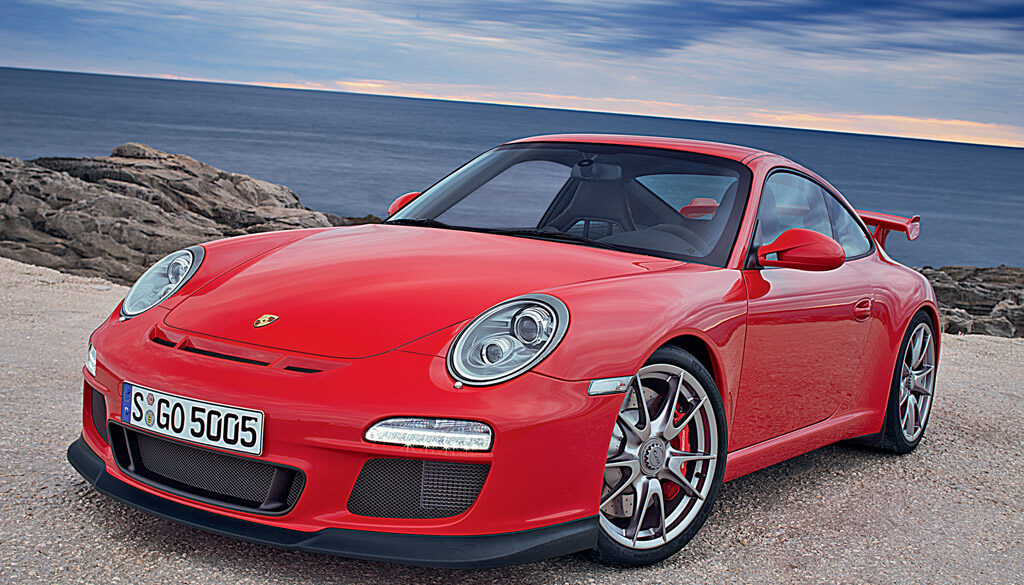
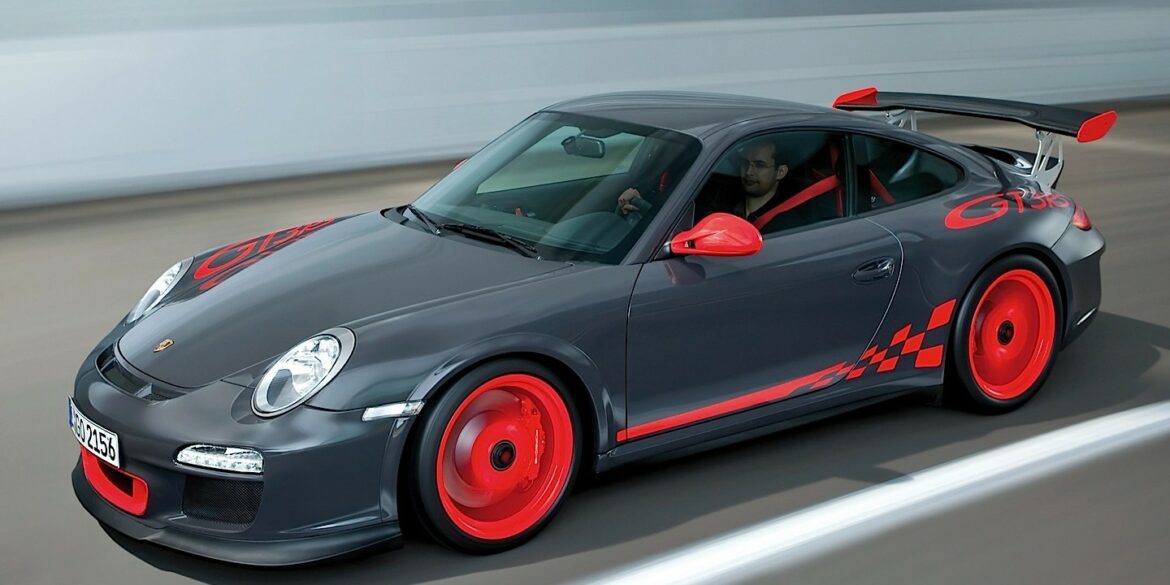
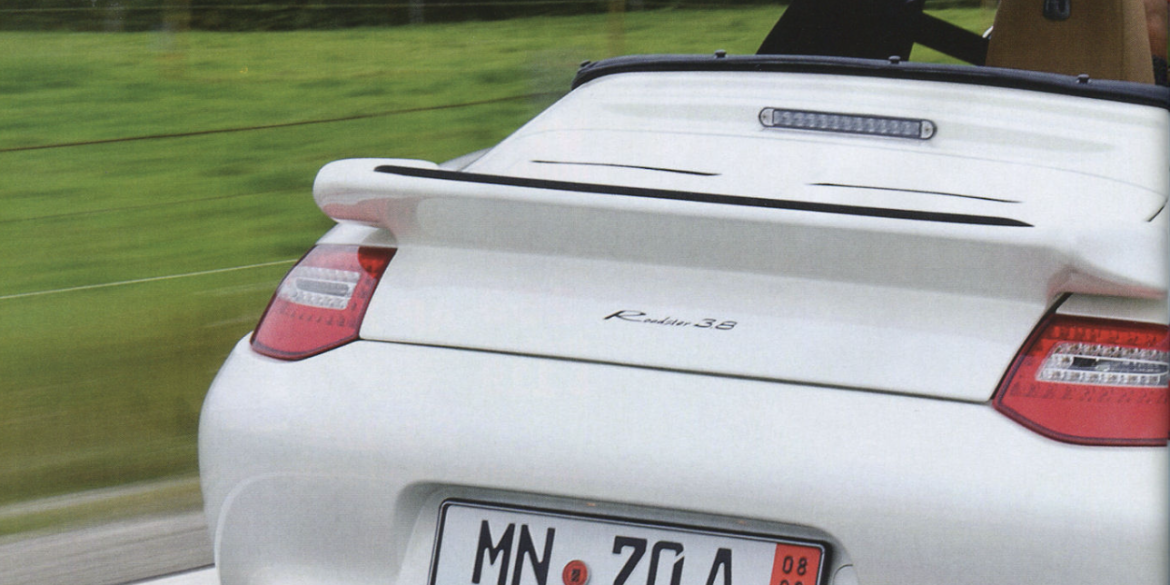
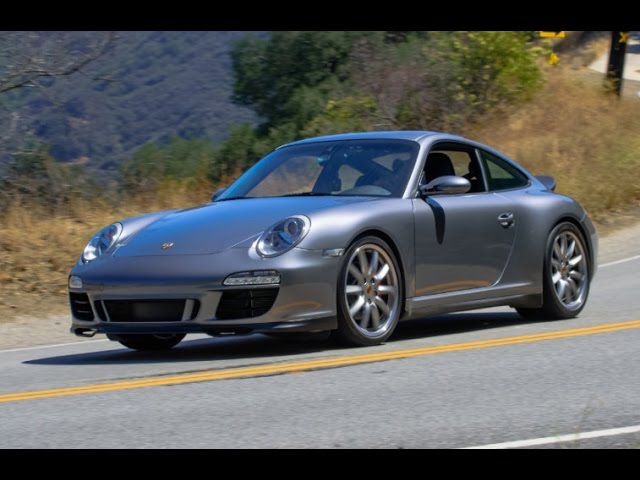
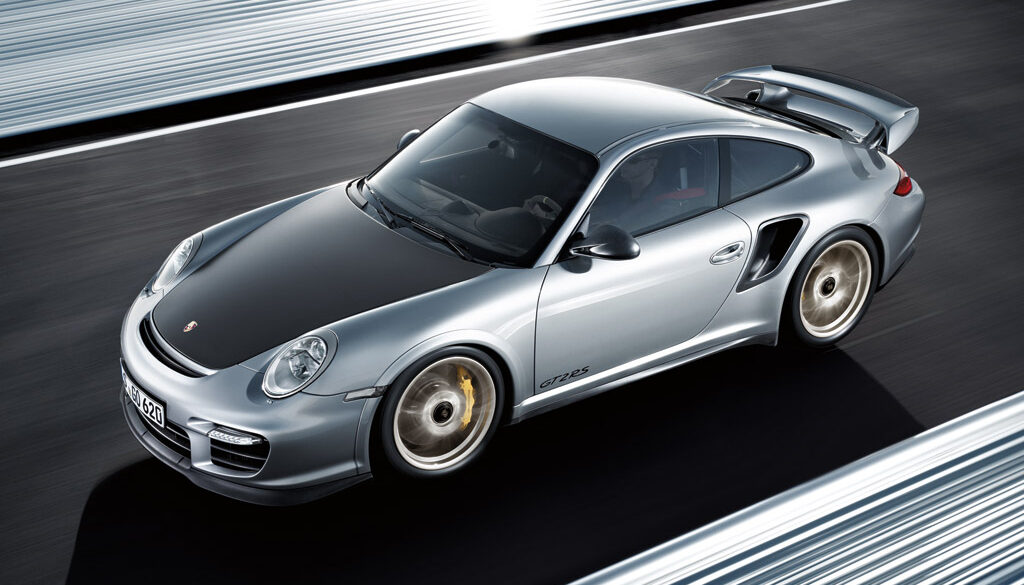
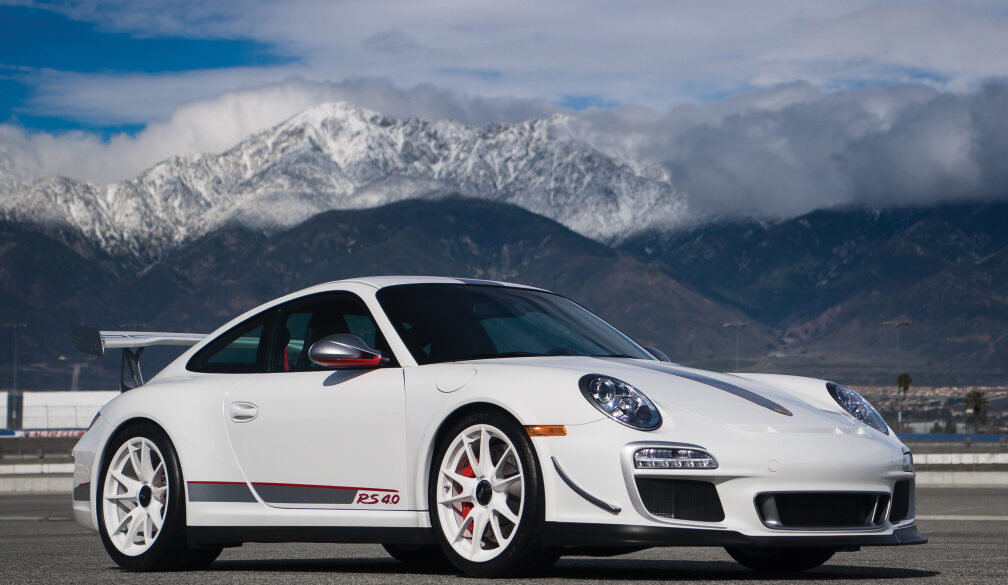
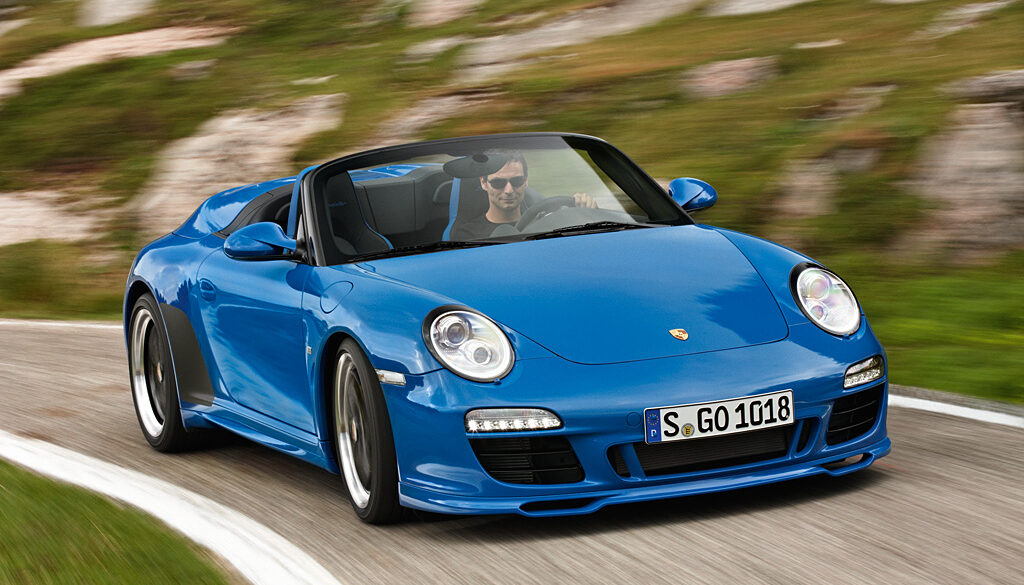
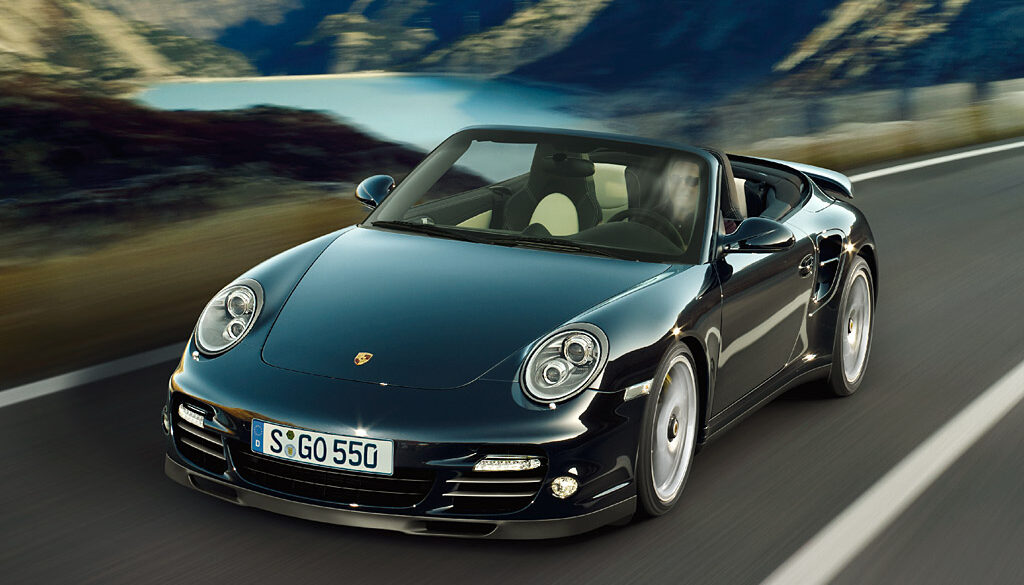
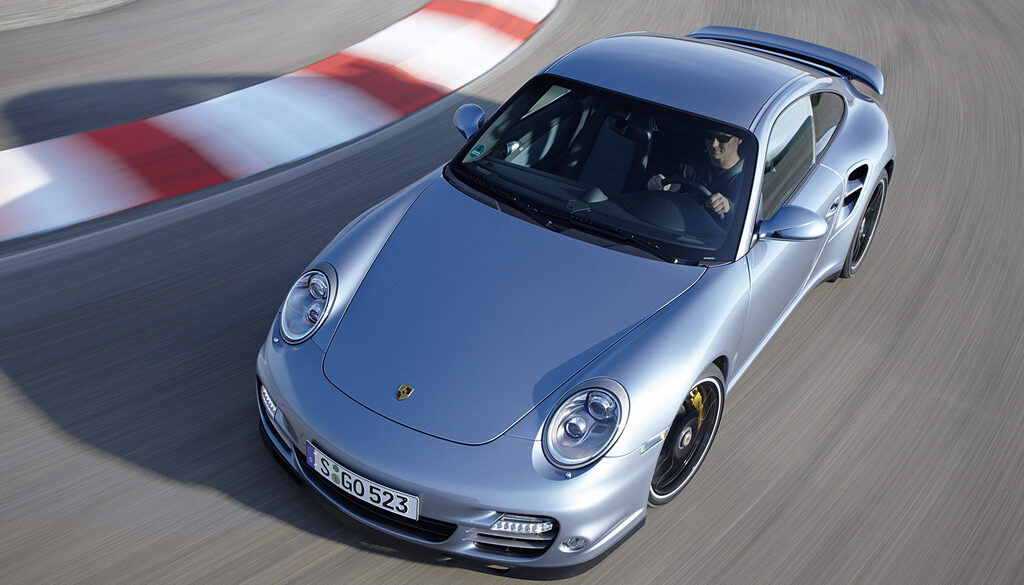
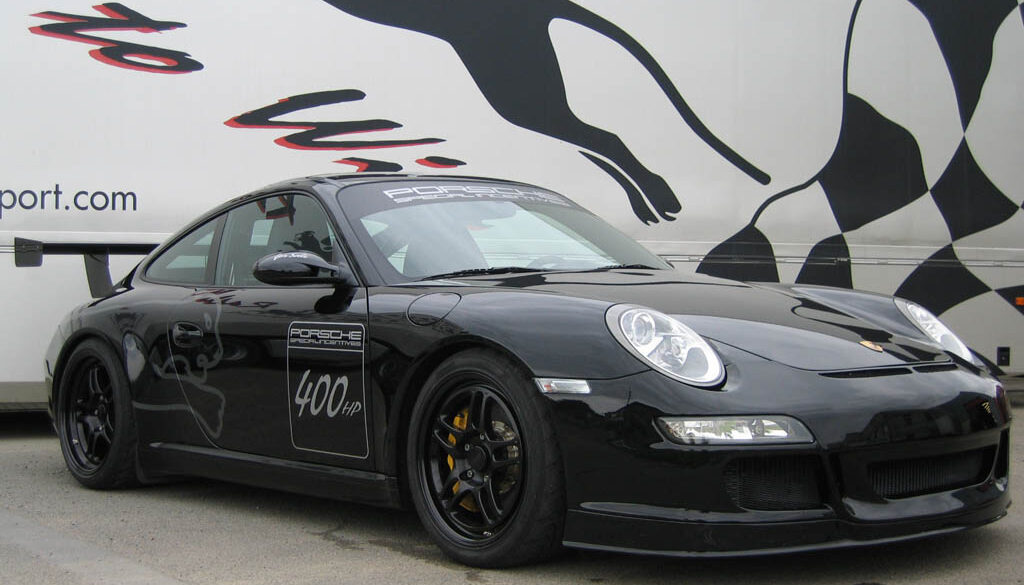
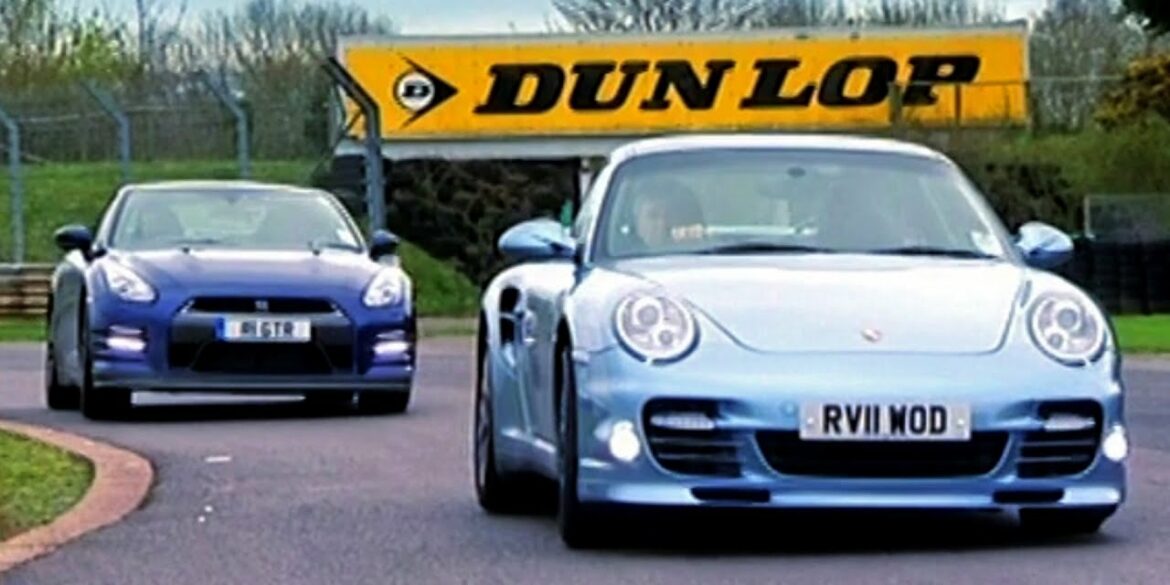
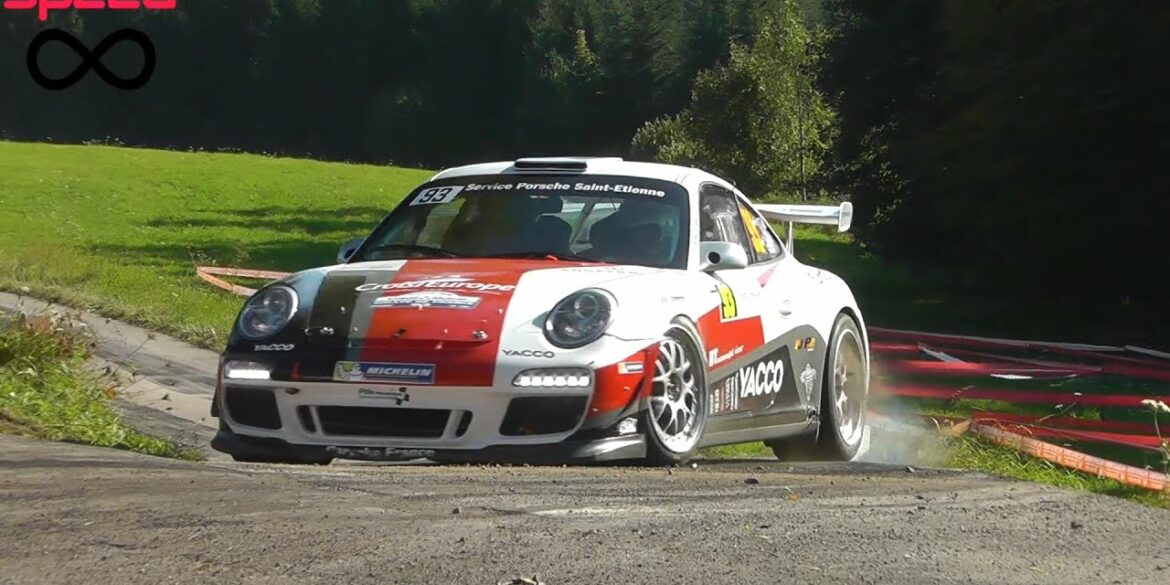
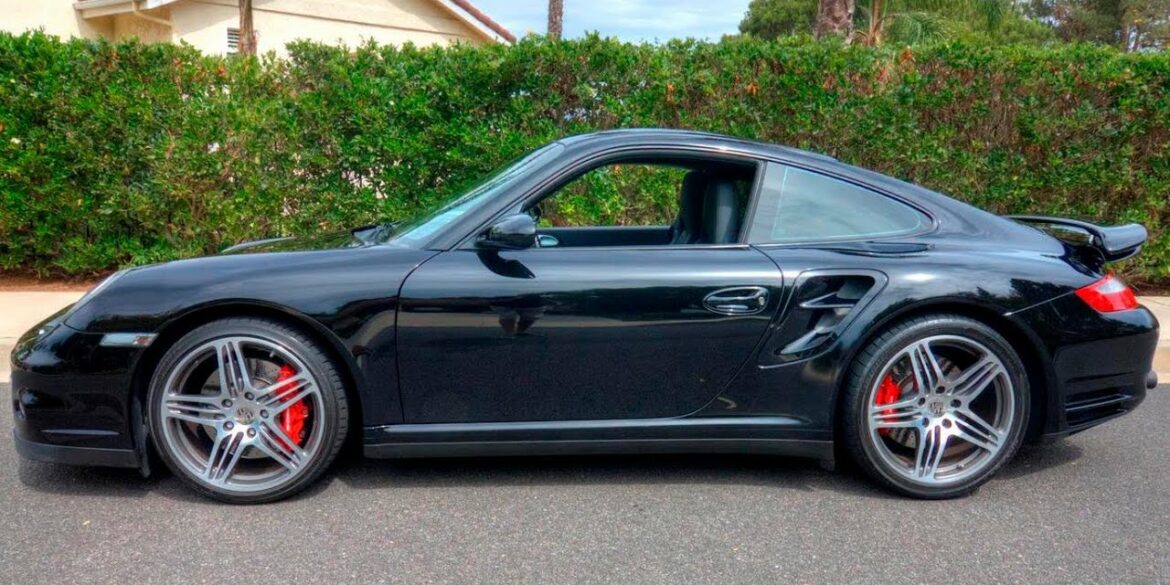
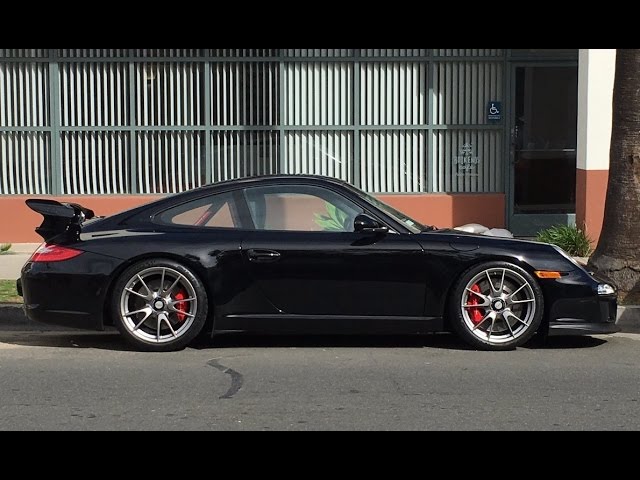
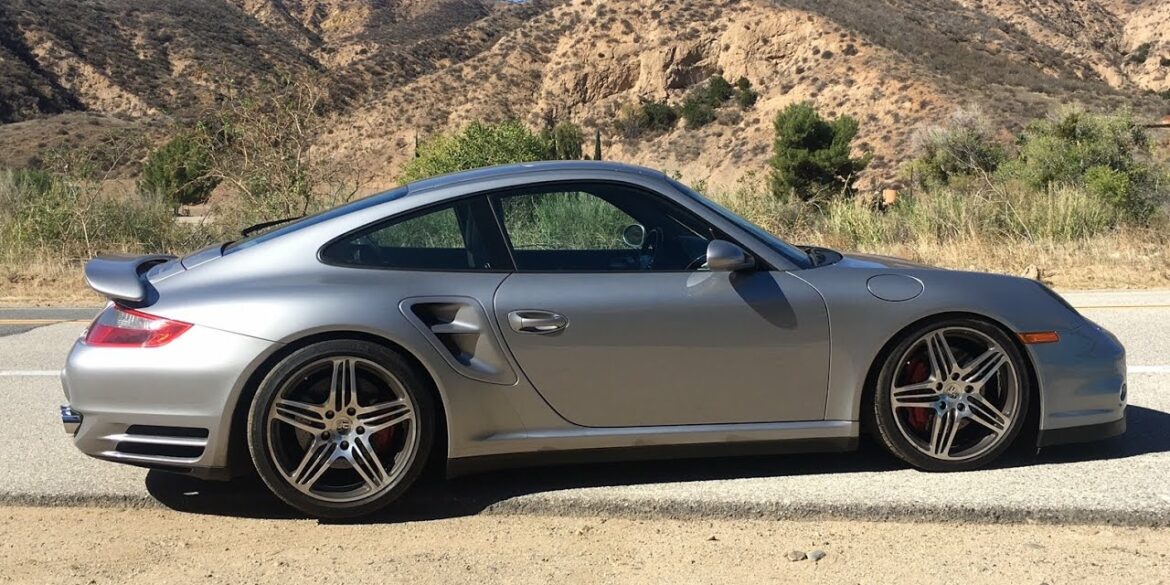
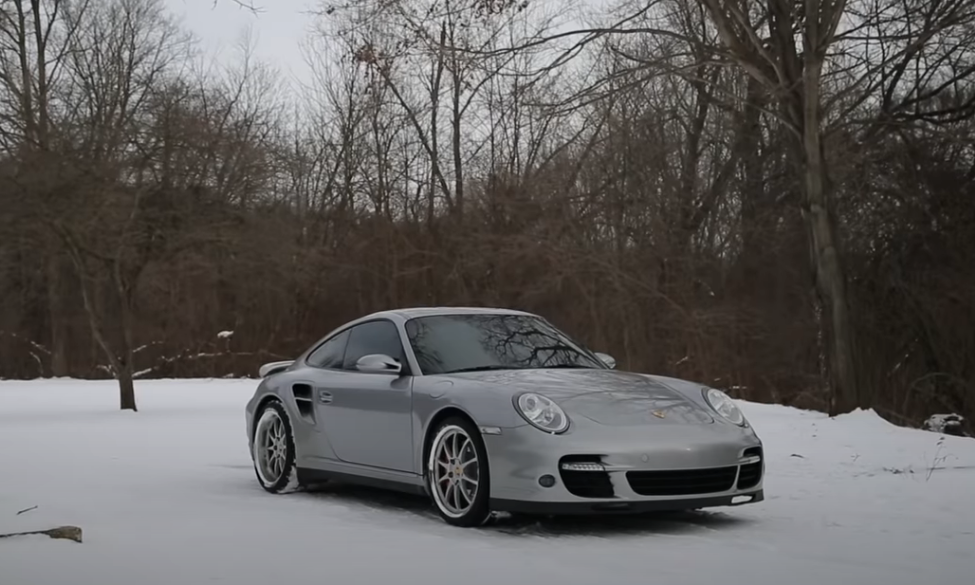
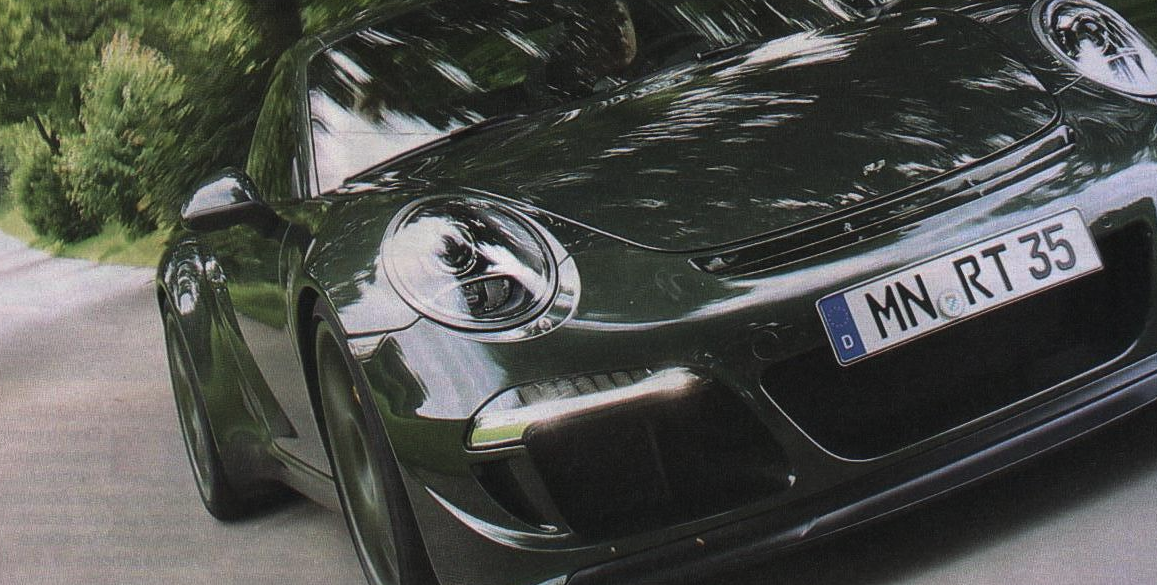
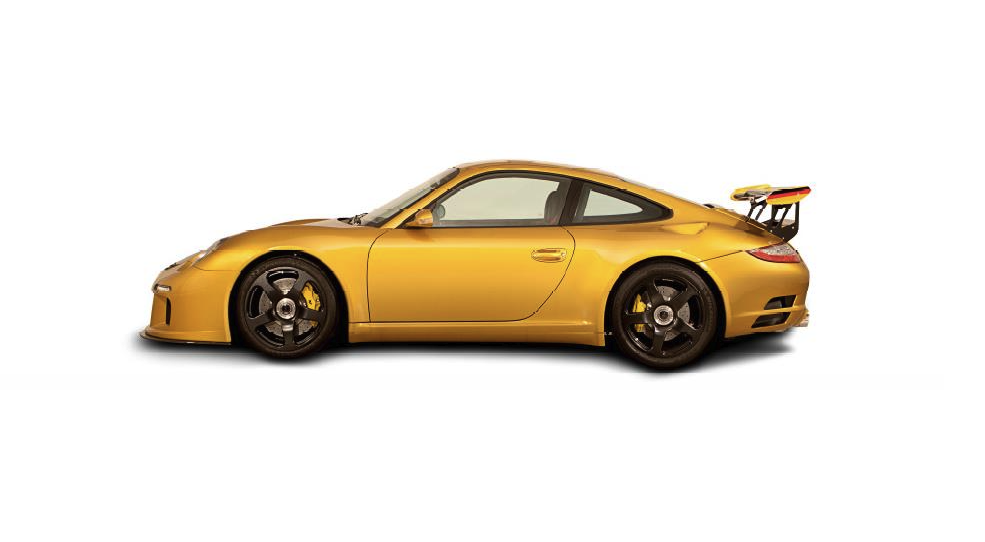
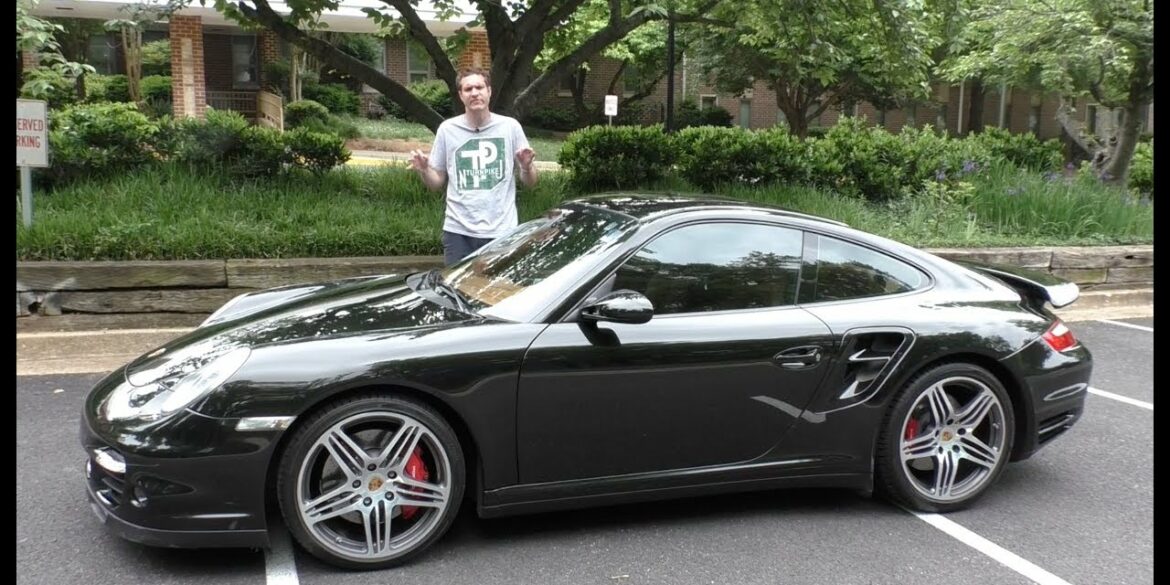
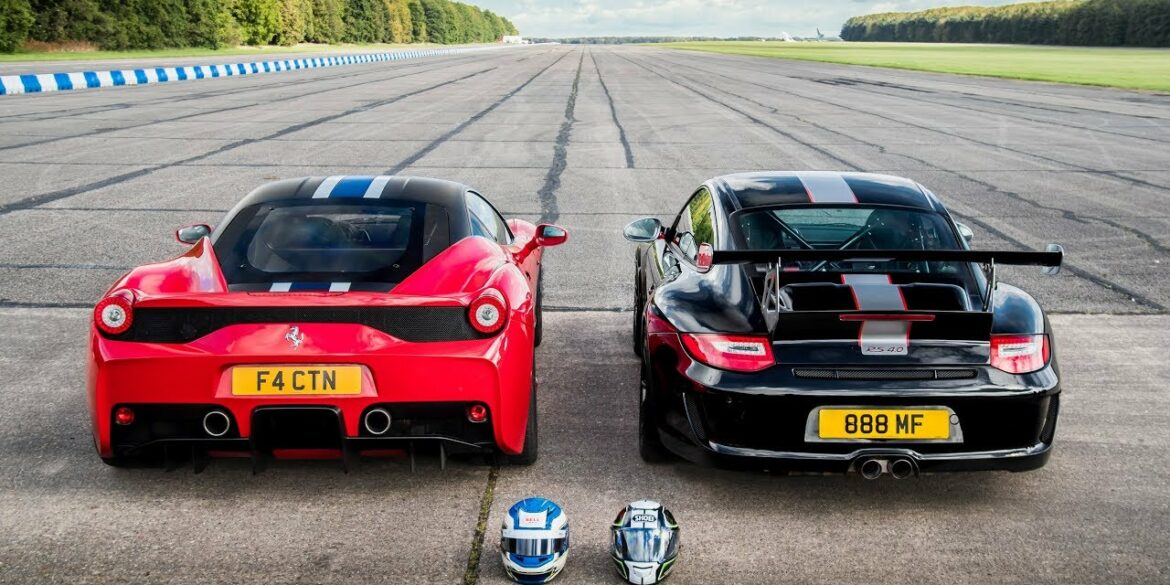
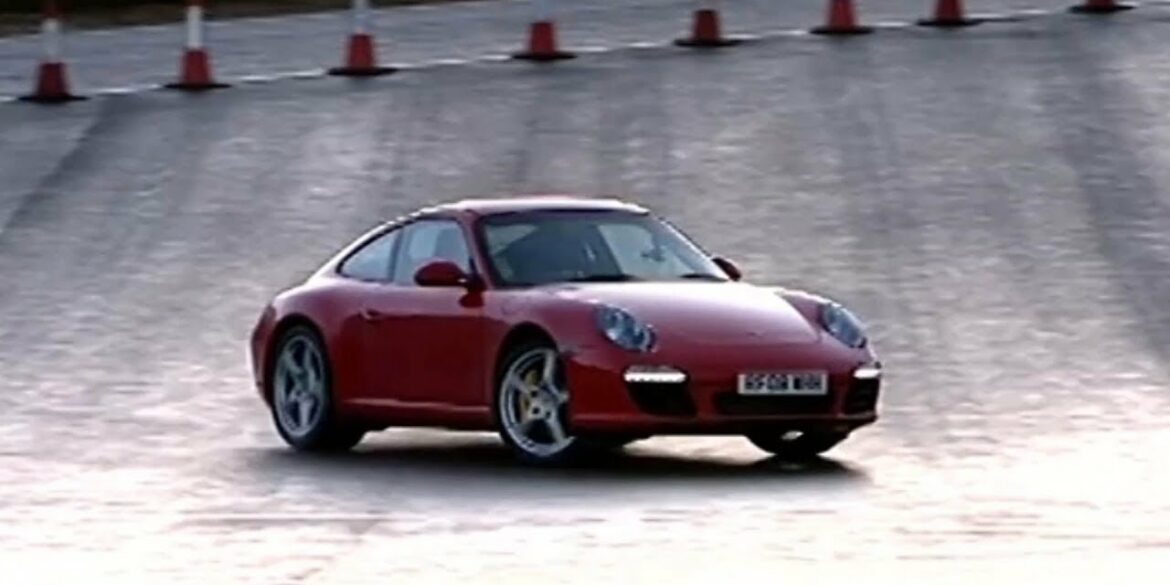
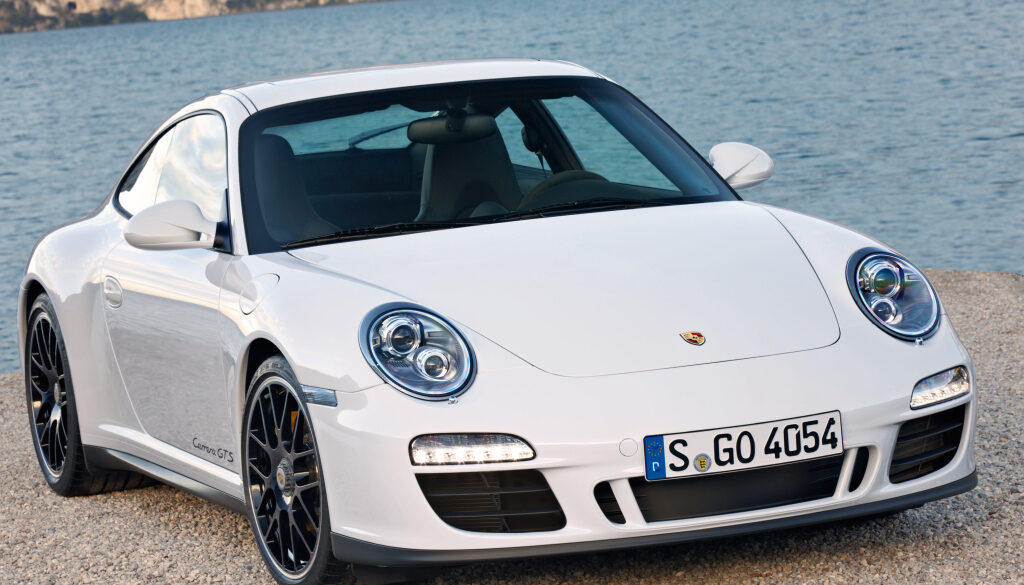
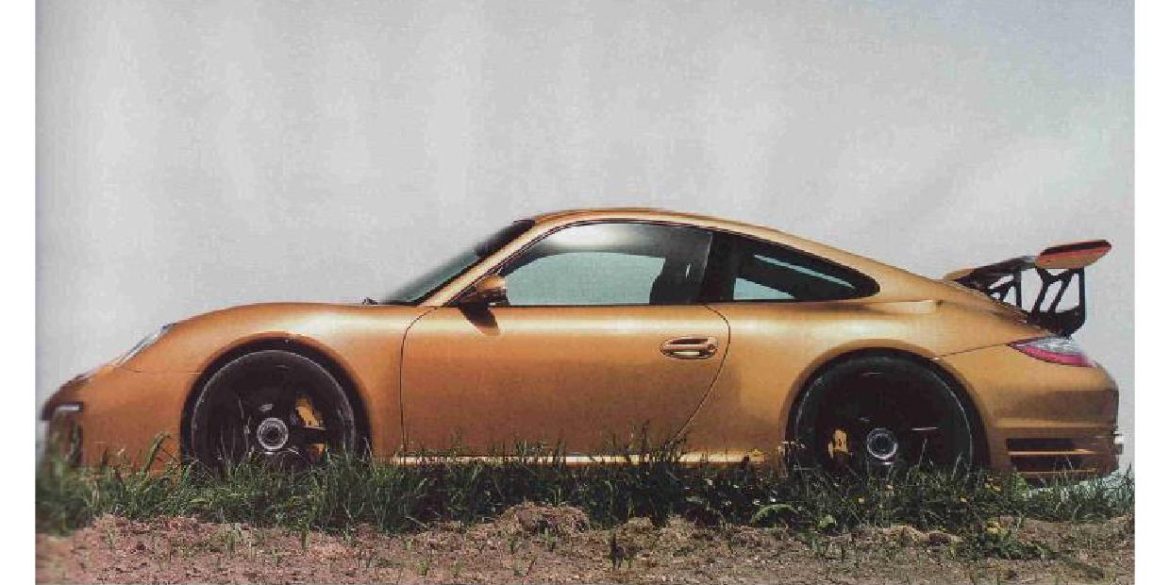
![Porsche 997 GT3 RS - ORGASMIC SOUND [CHASING PORSCHE 996 GT3] RAW POV](https://www.stuttcars.com/wp-content/uploads/2018/06/Porsche-997-GT3-RS-ORGASMIC-SOUND-CHASING-PORSCHE-996-GT3-RAW-POV--1170x585.jpeg)
